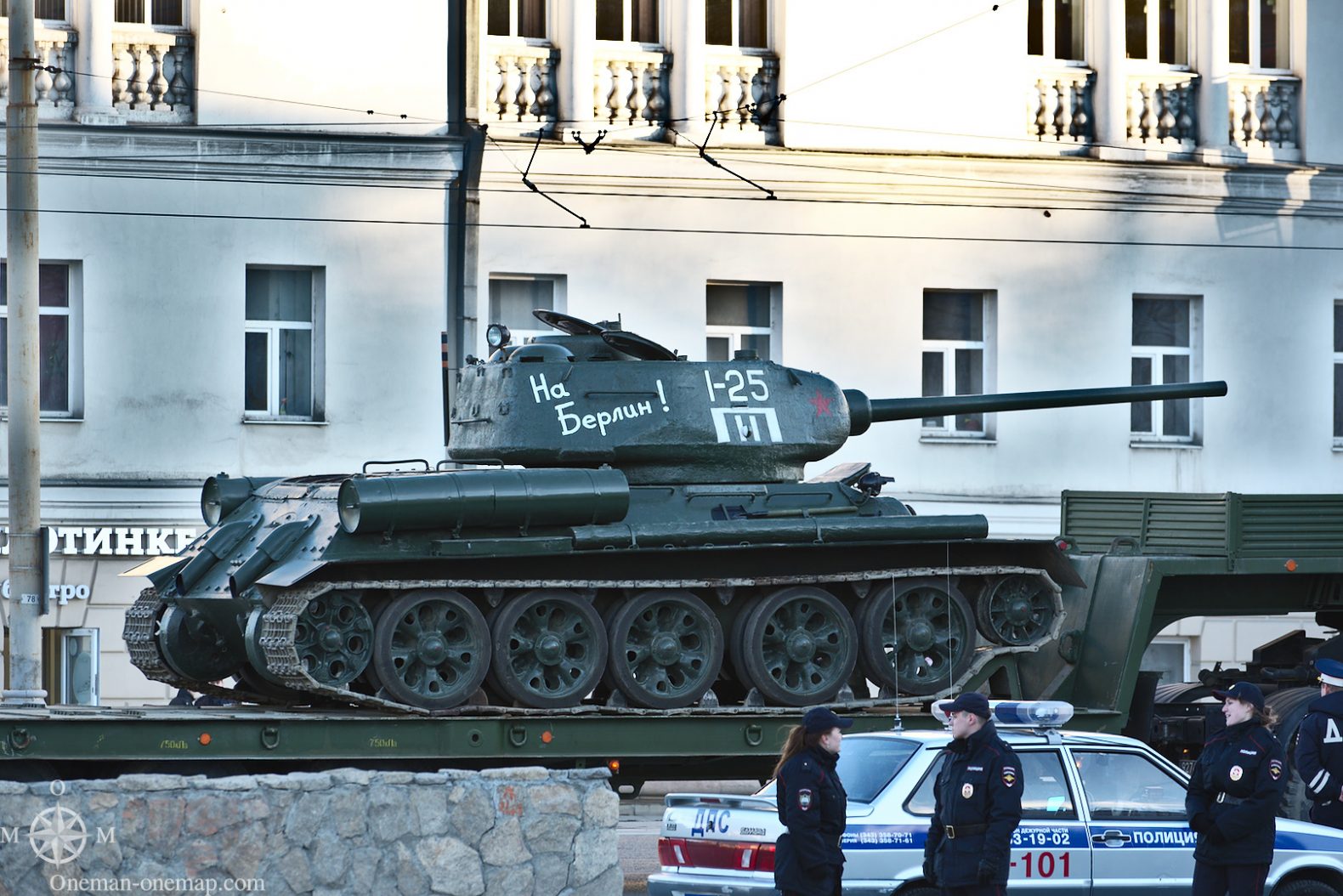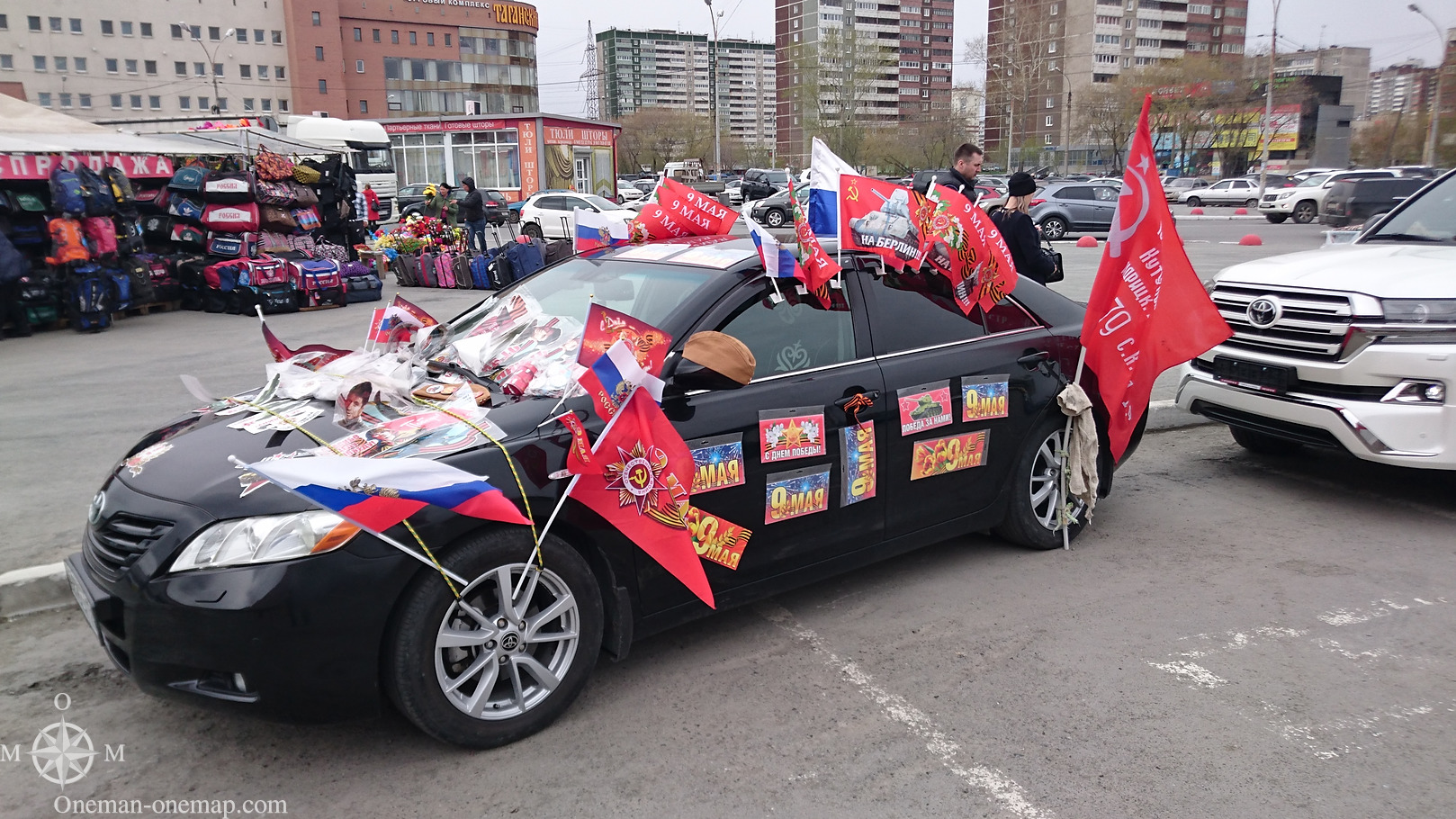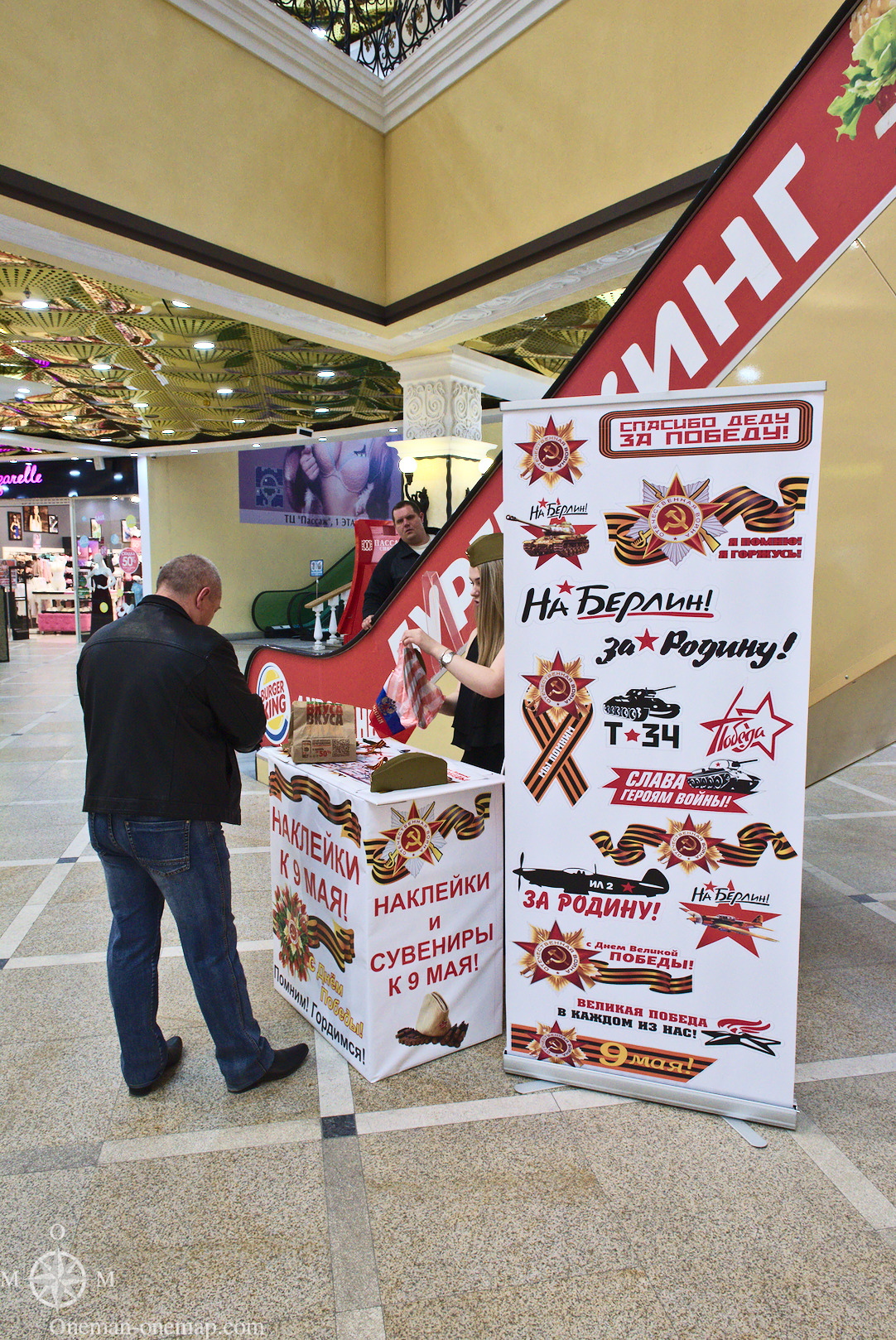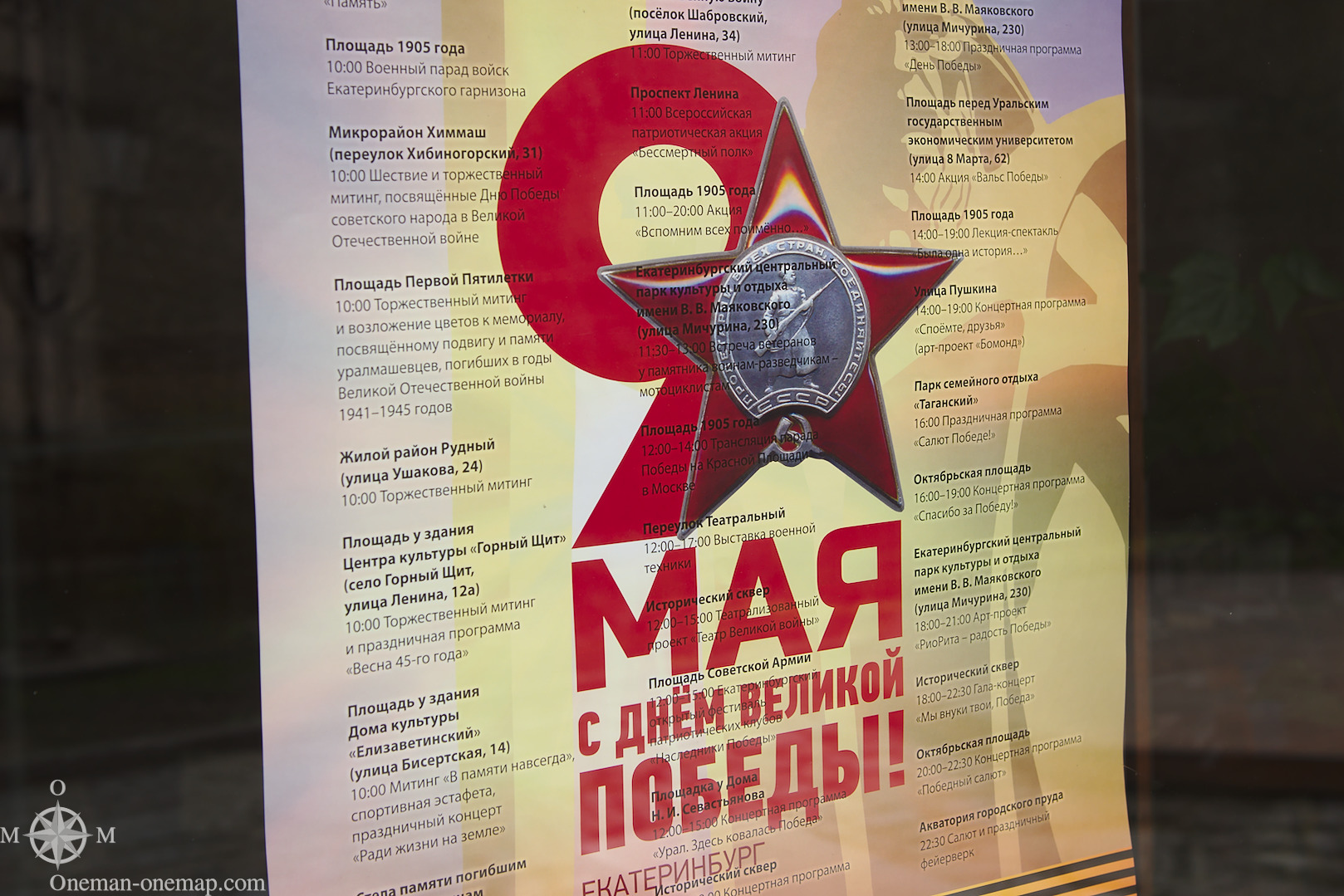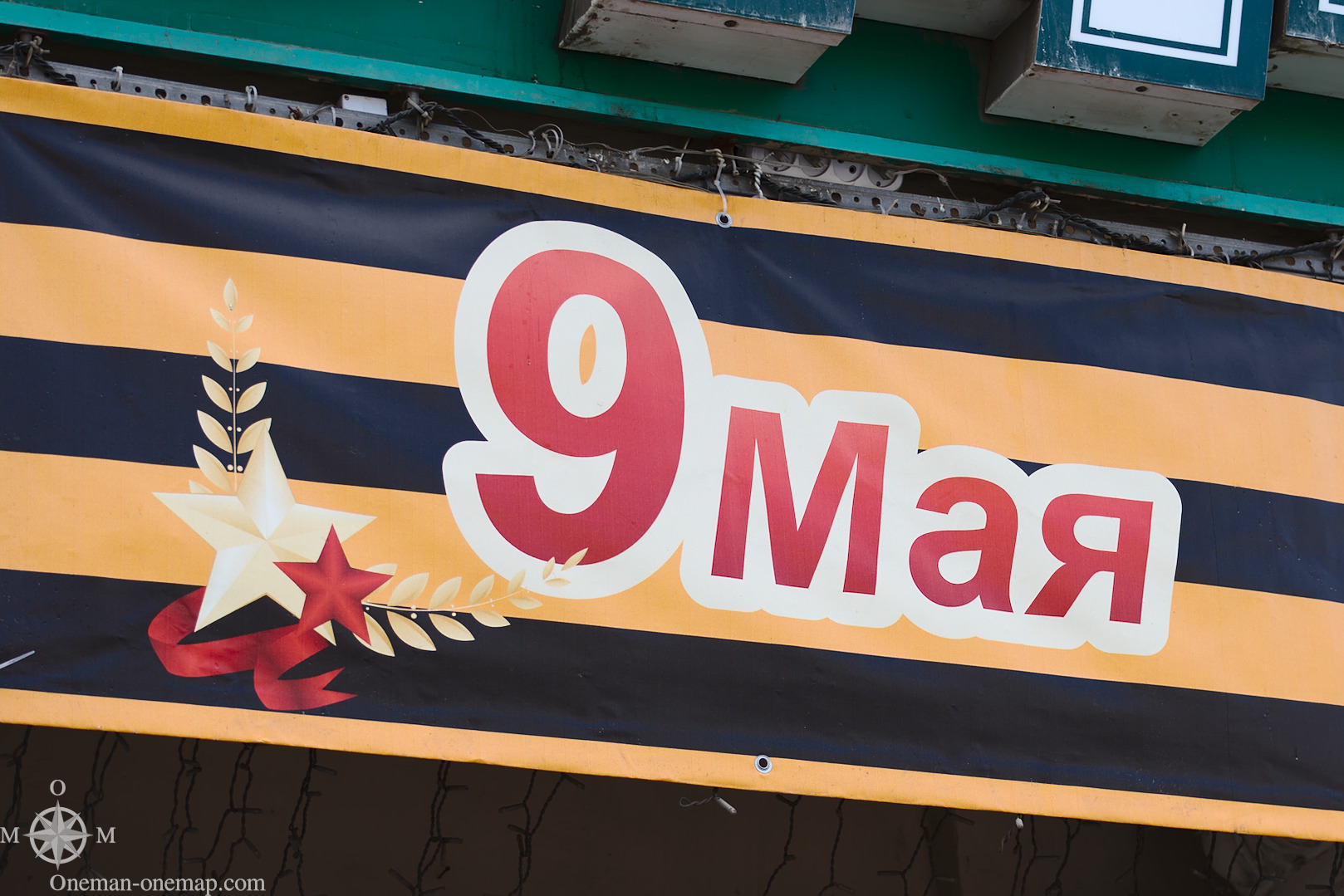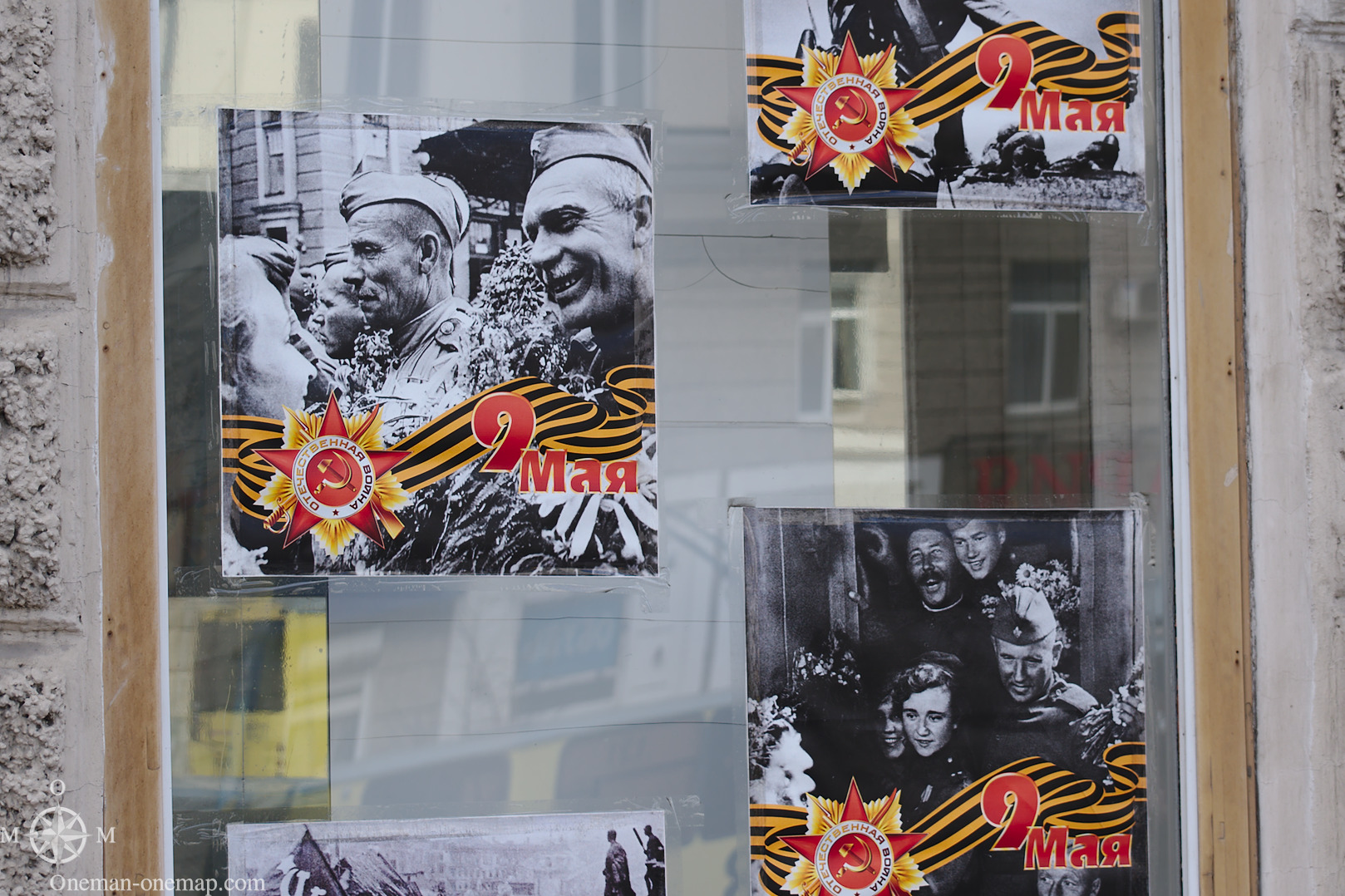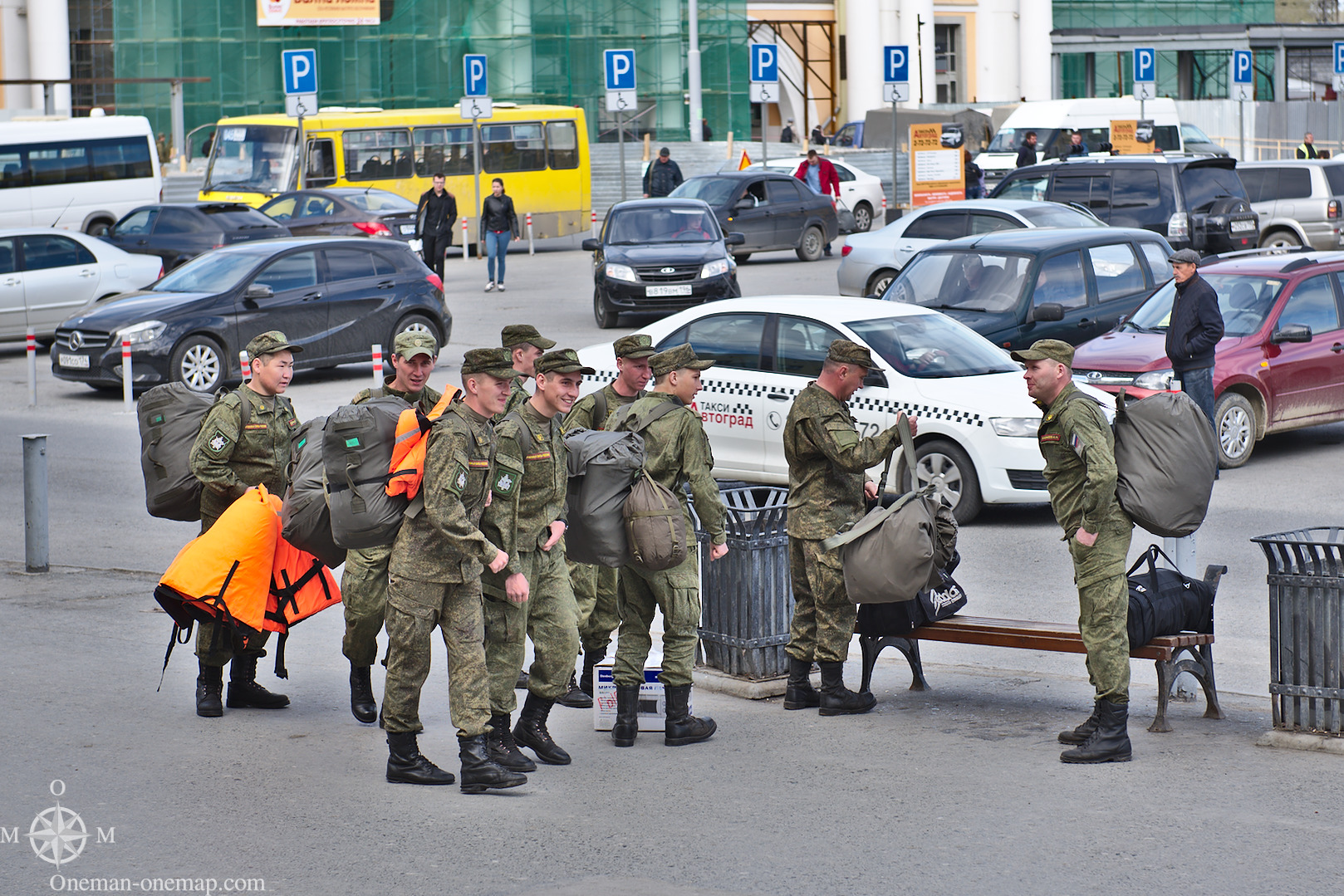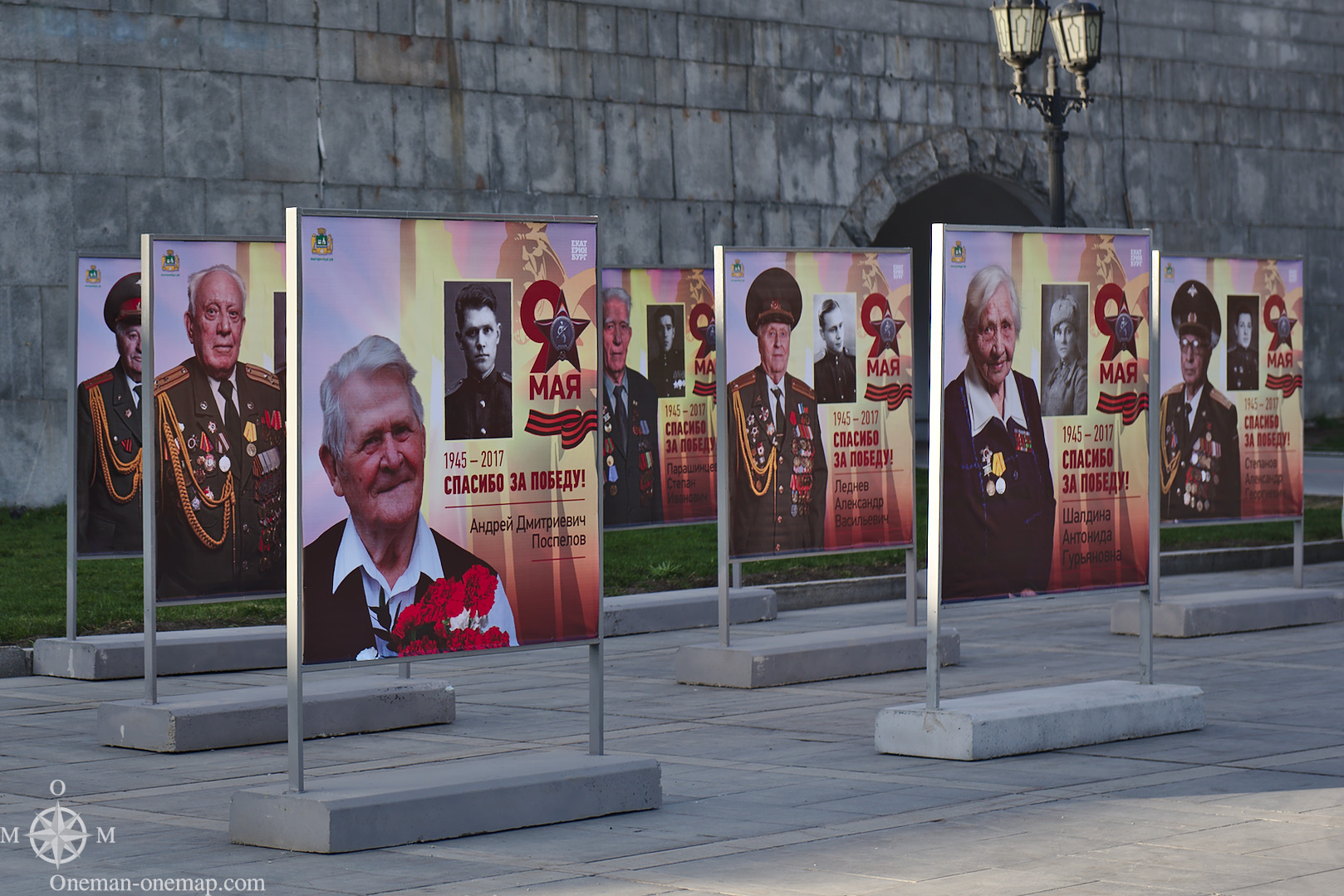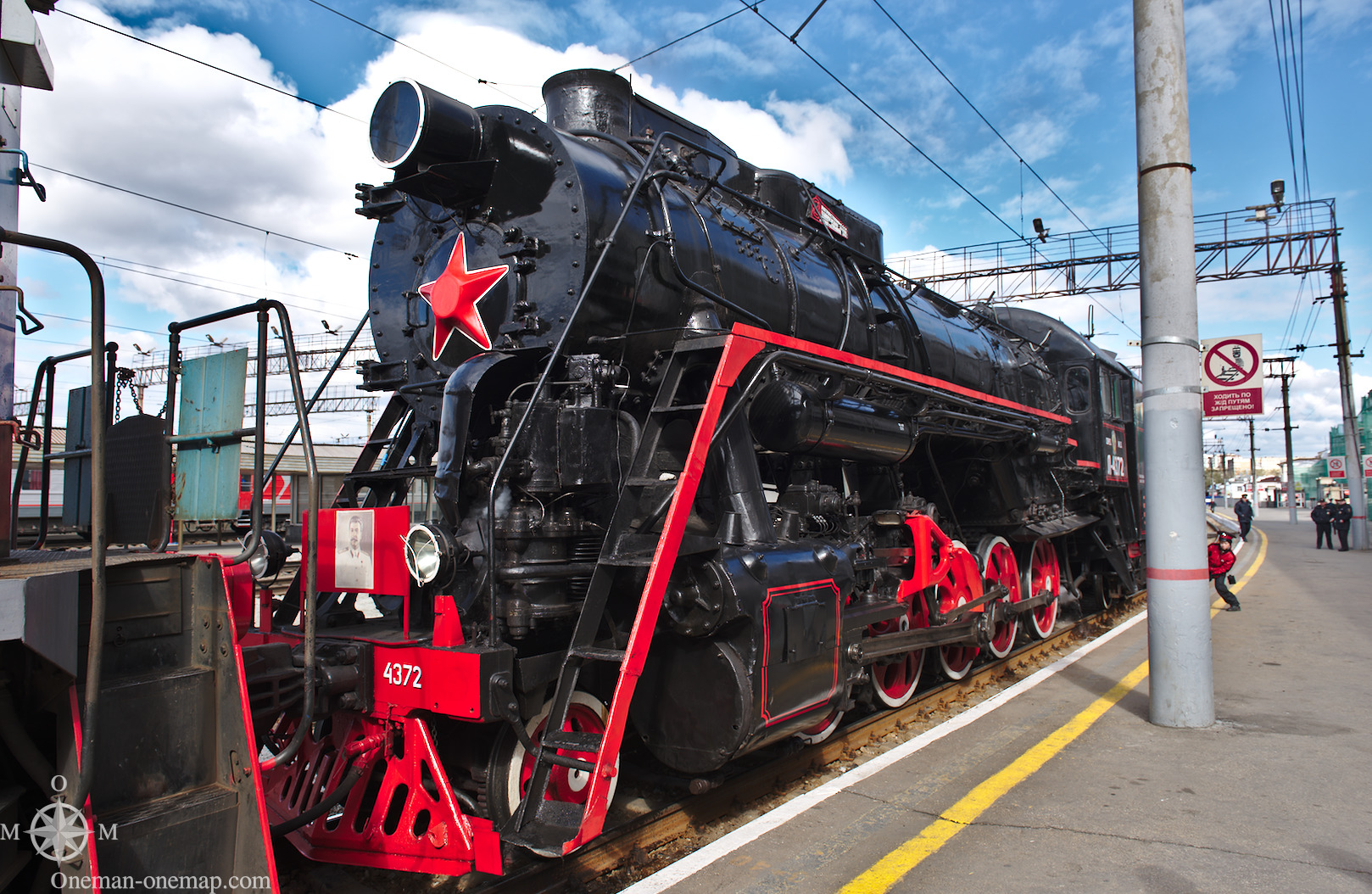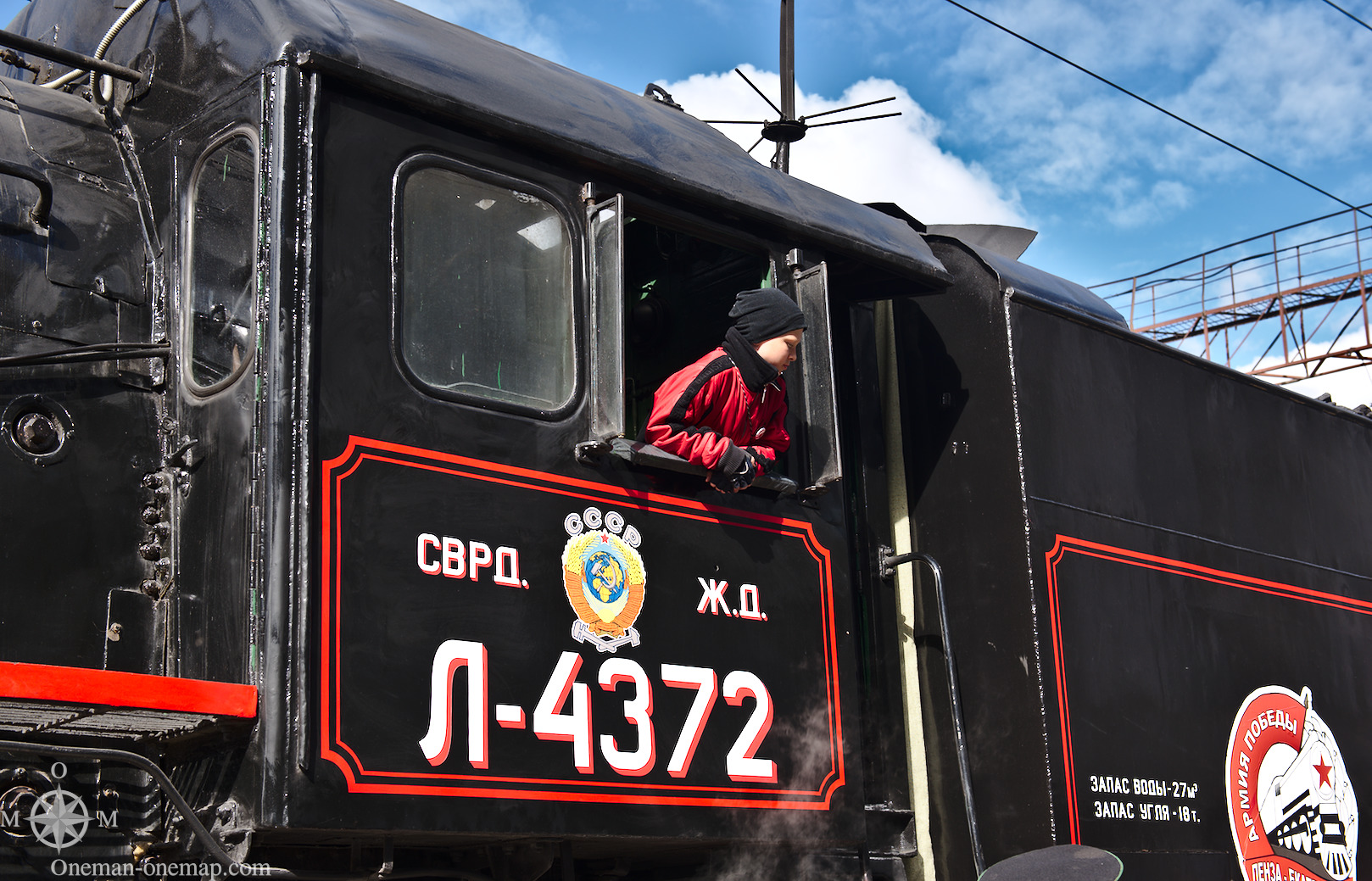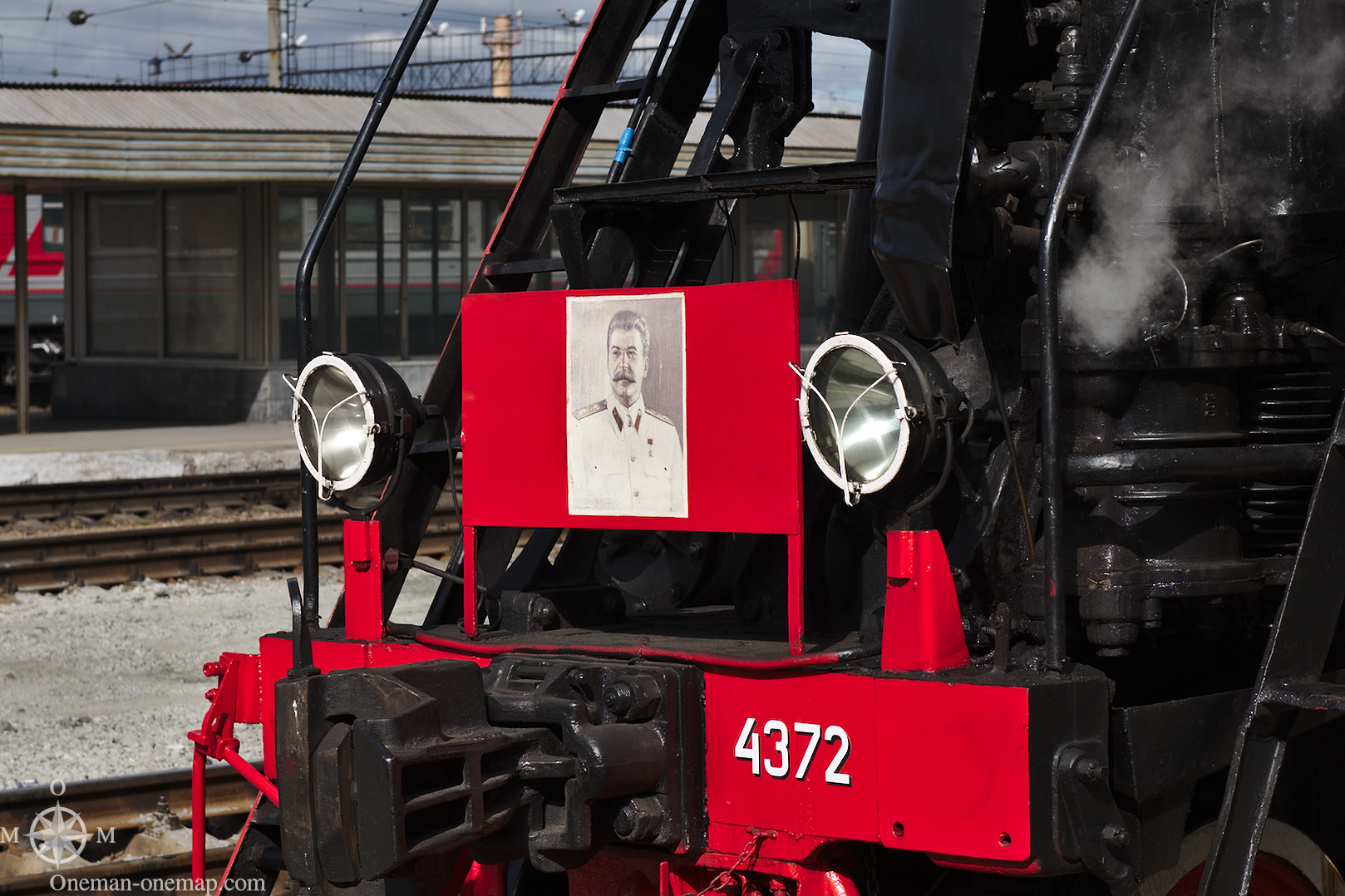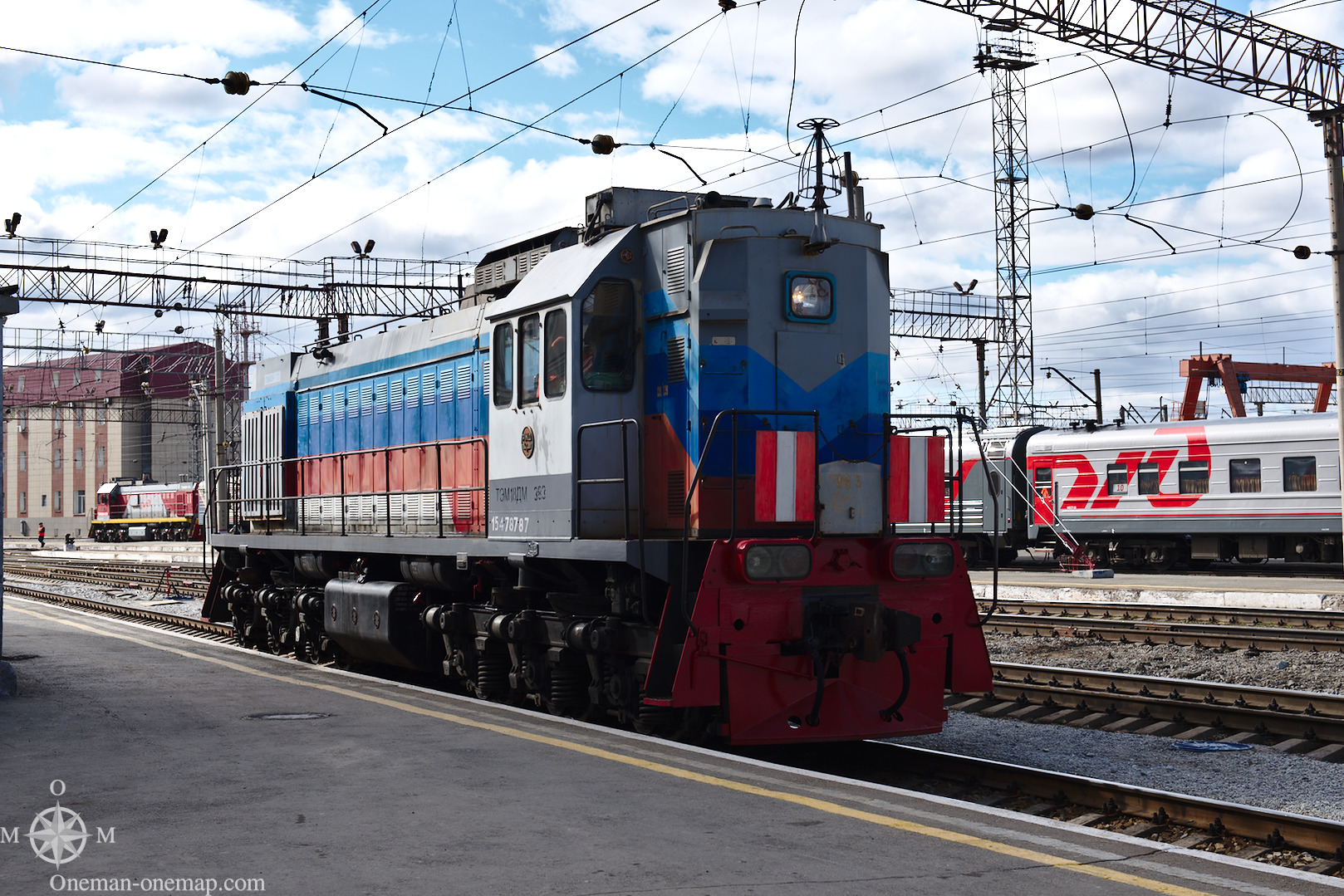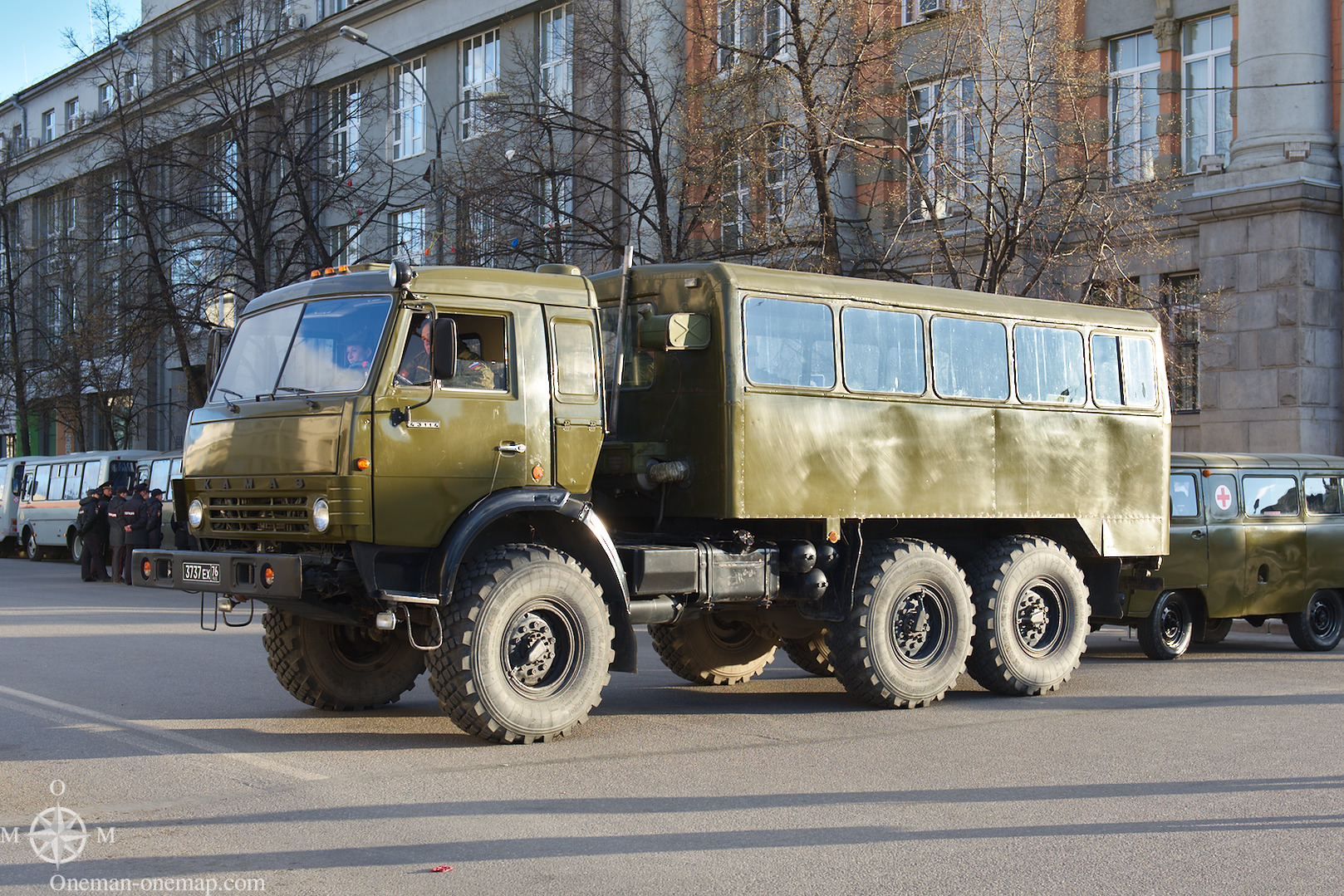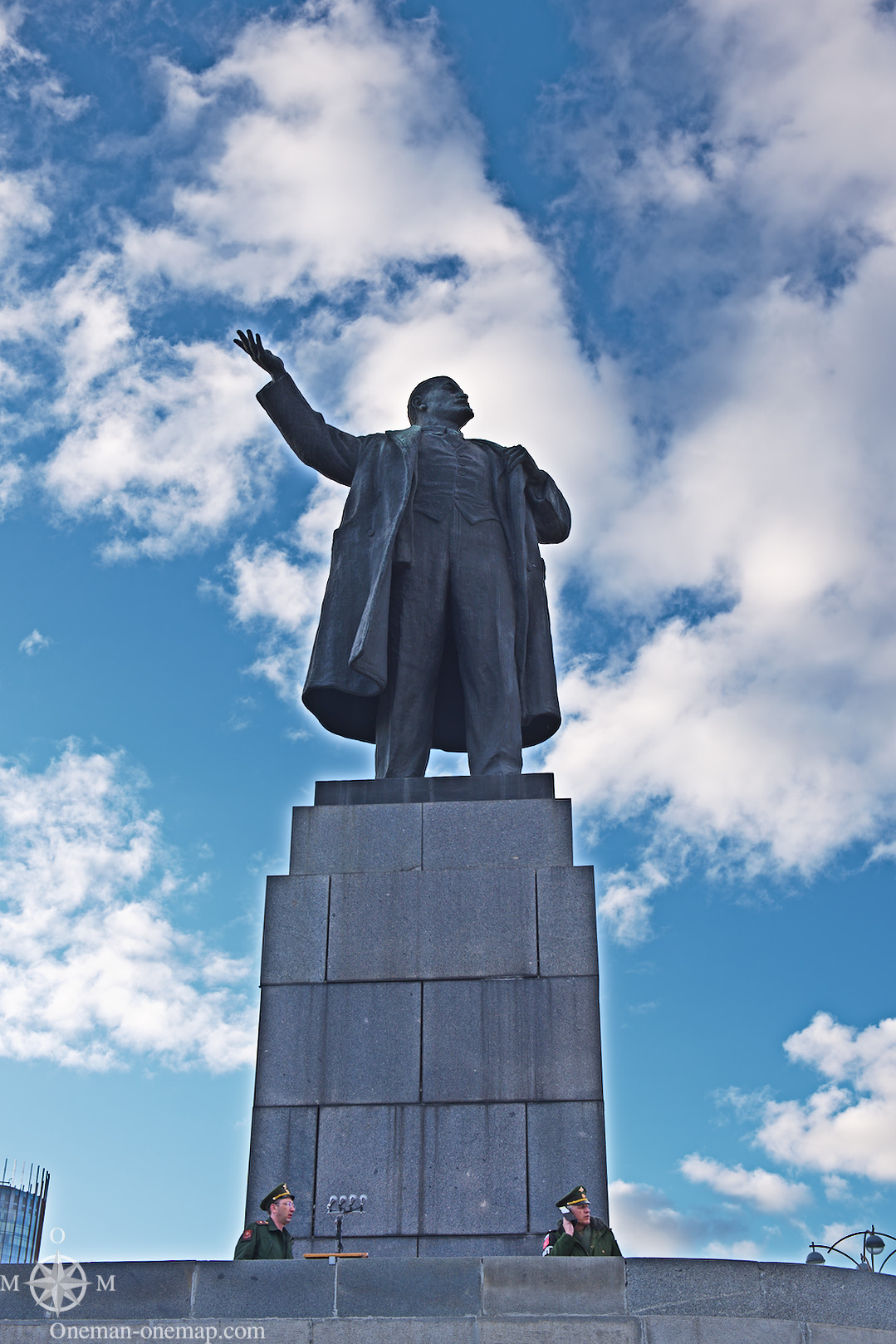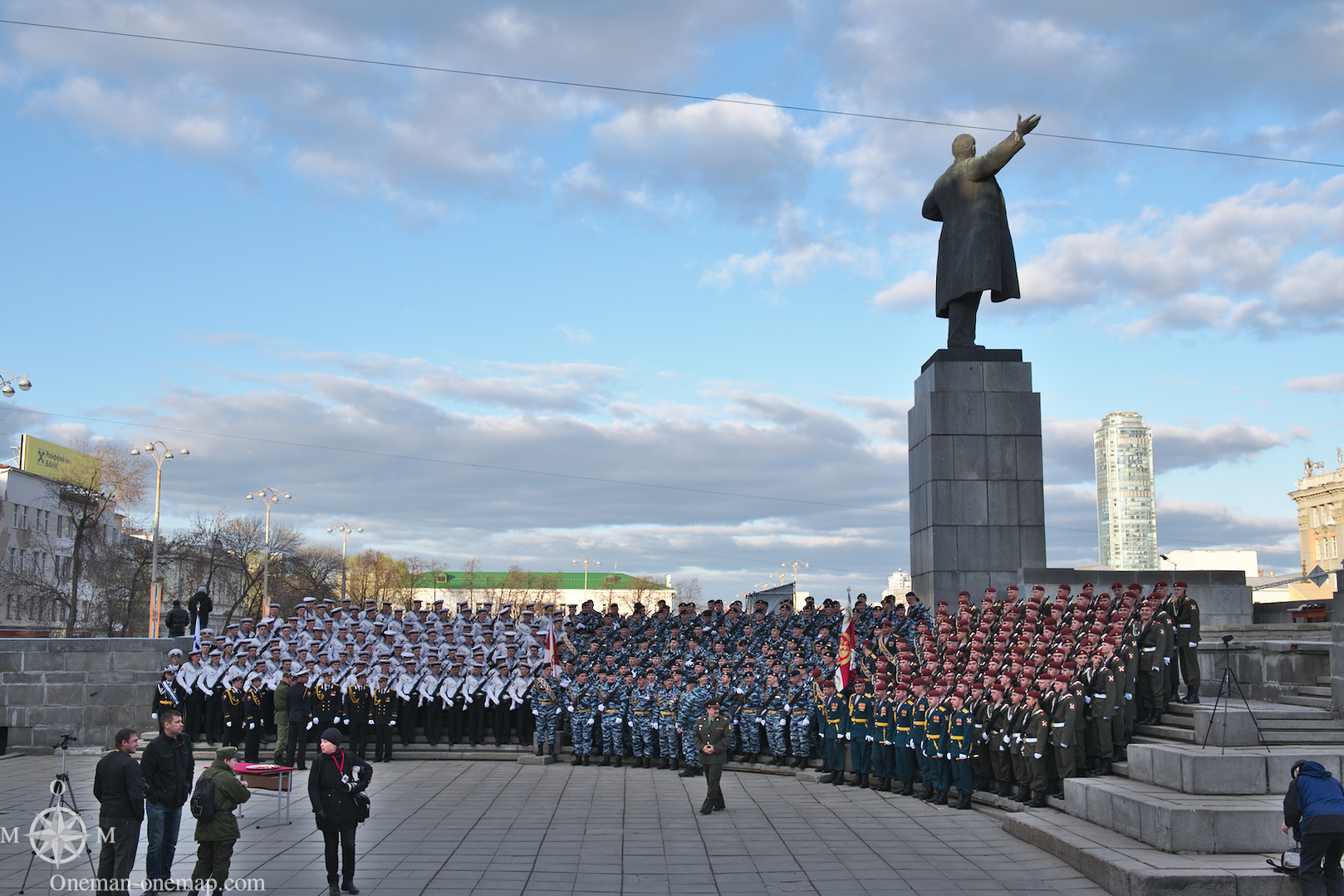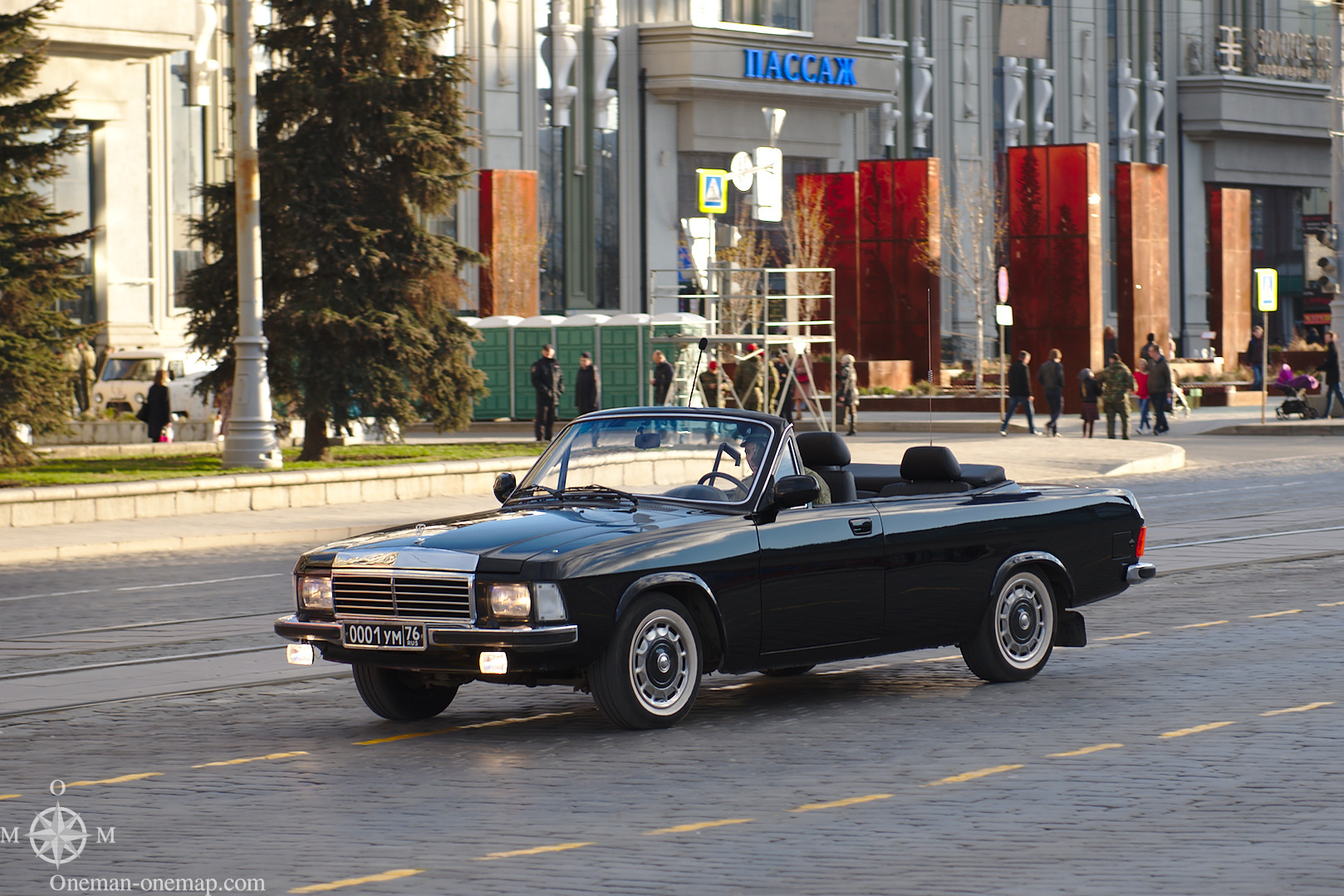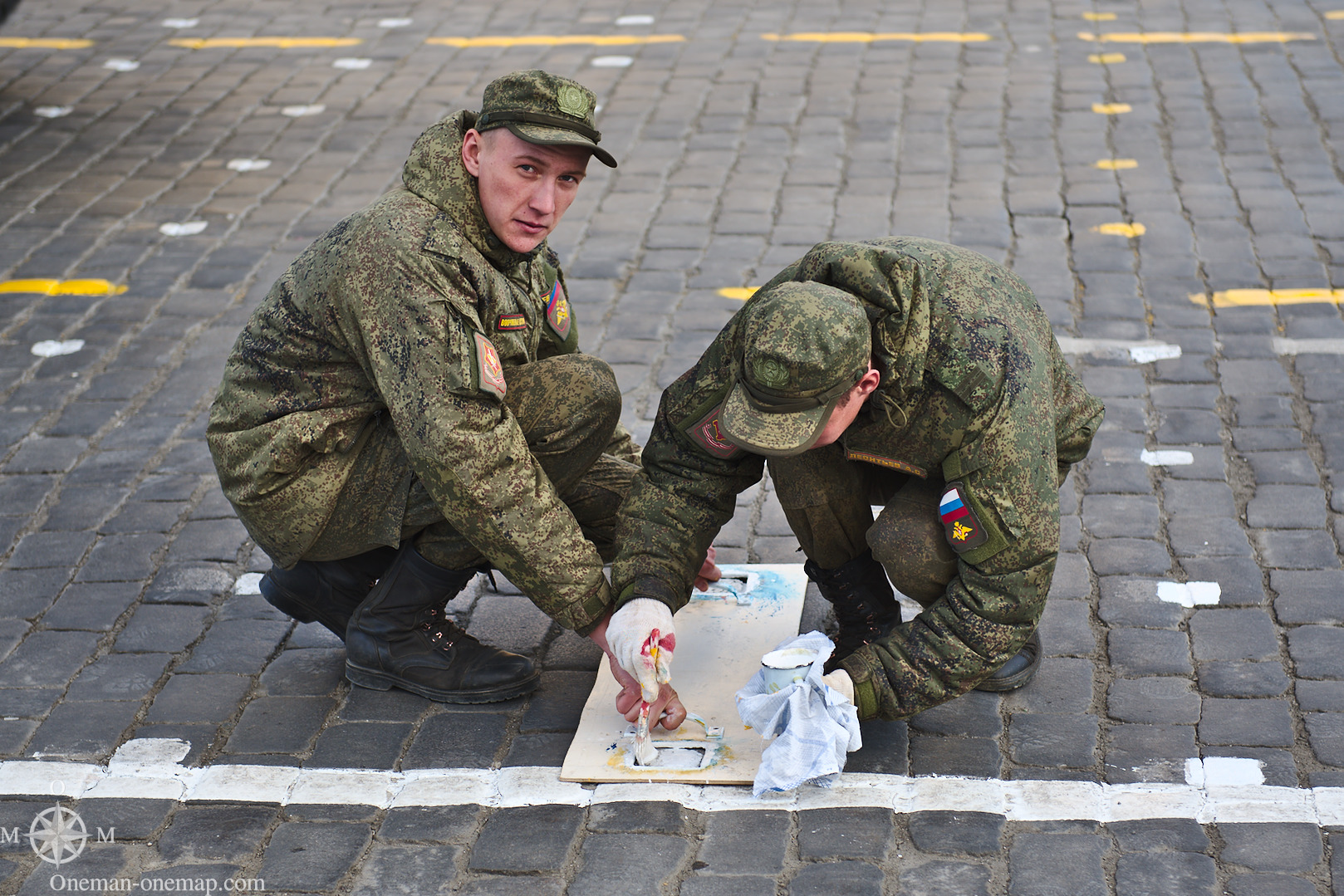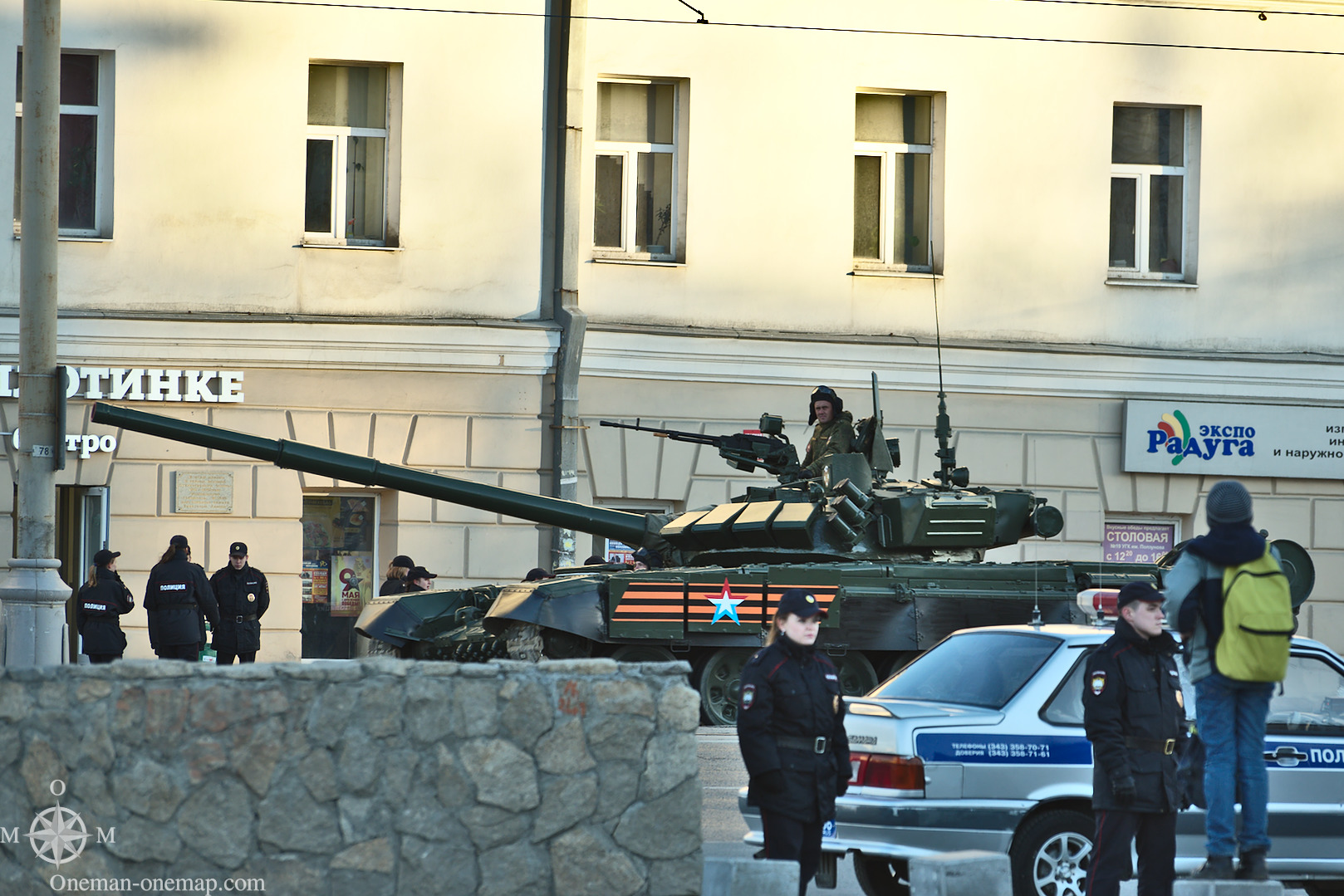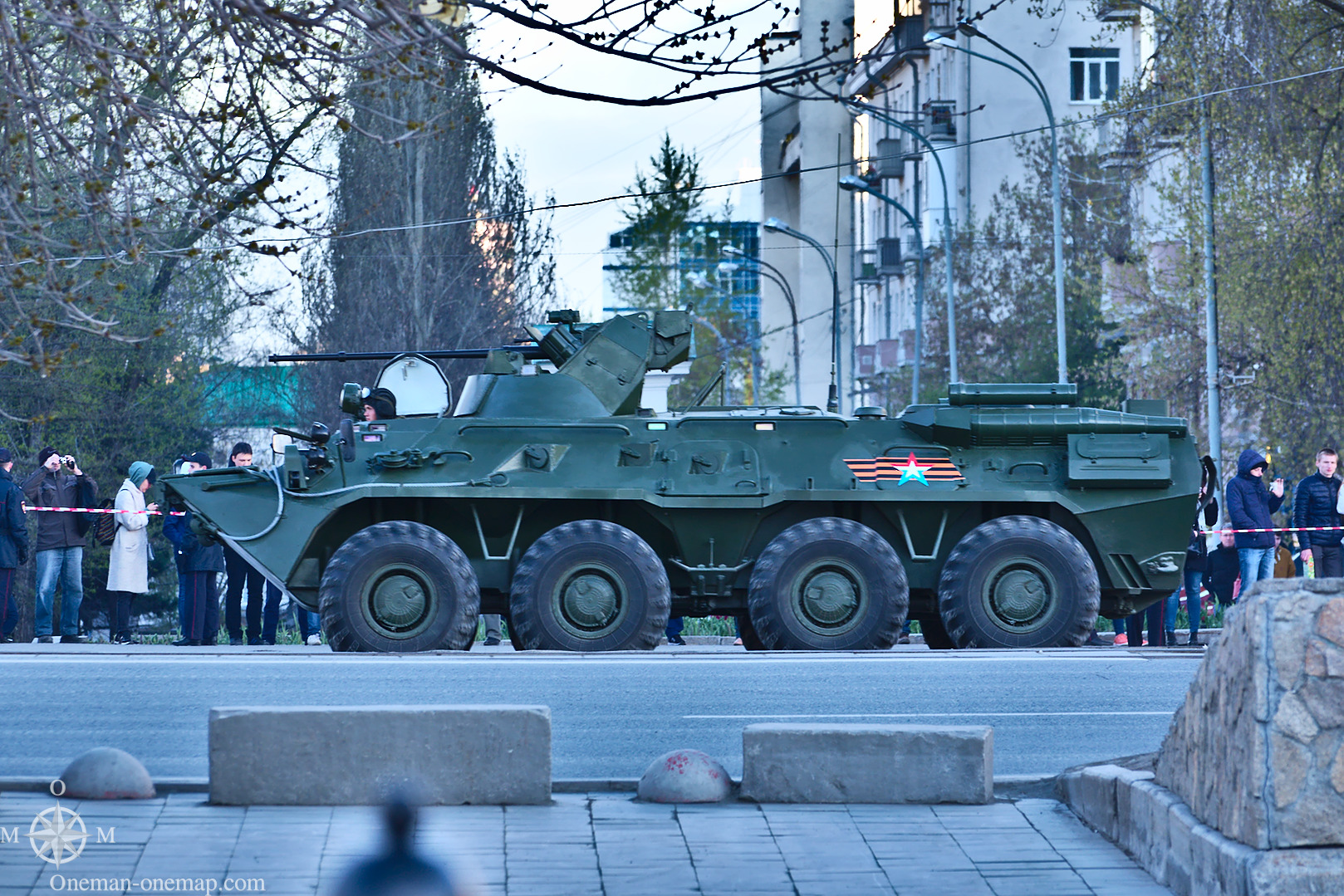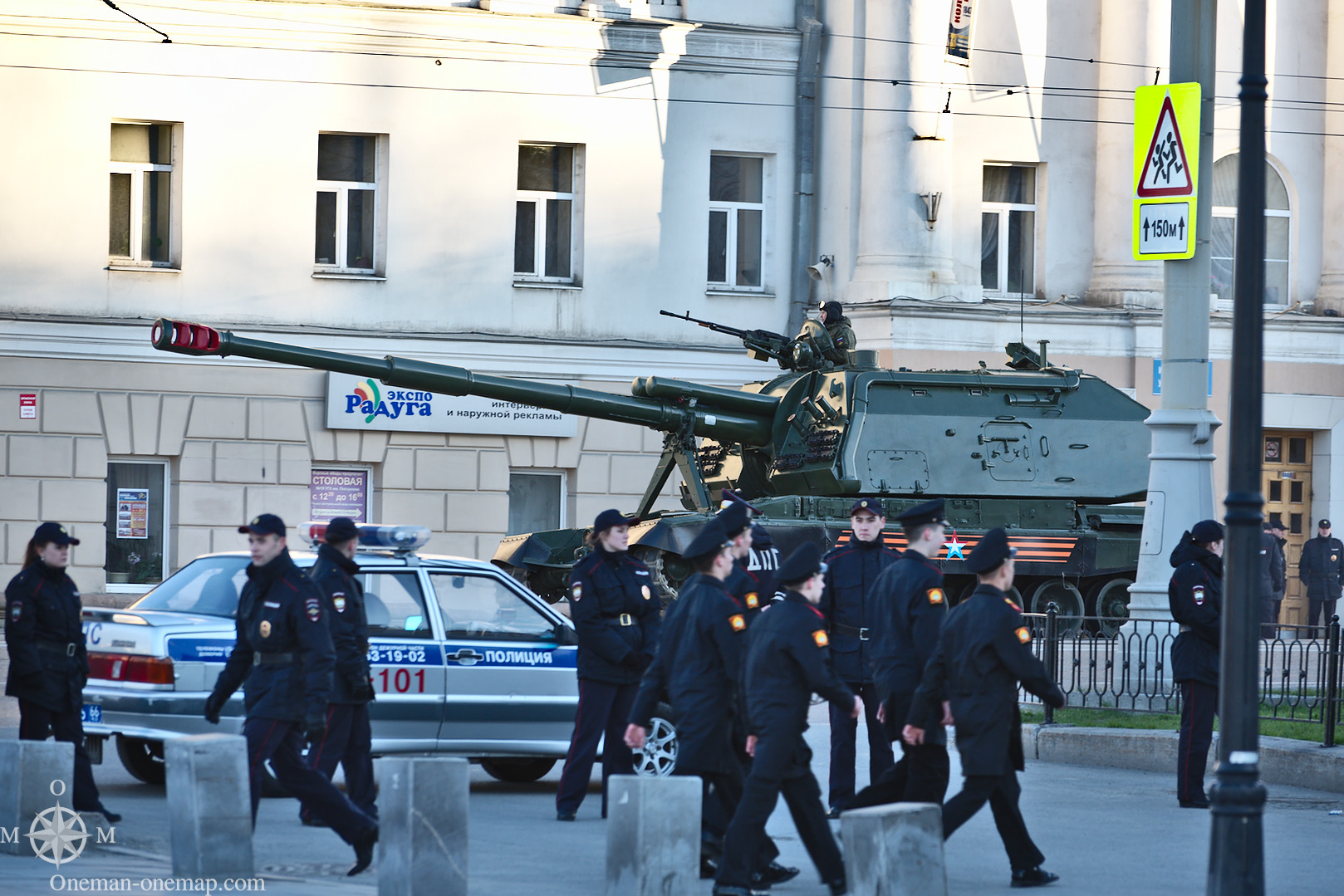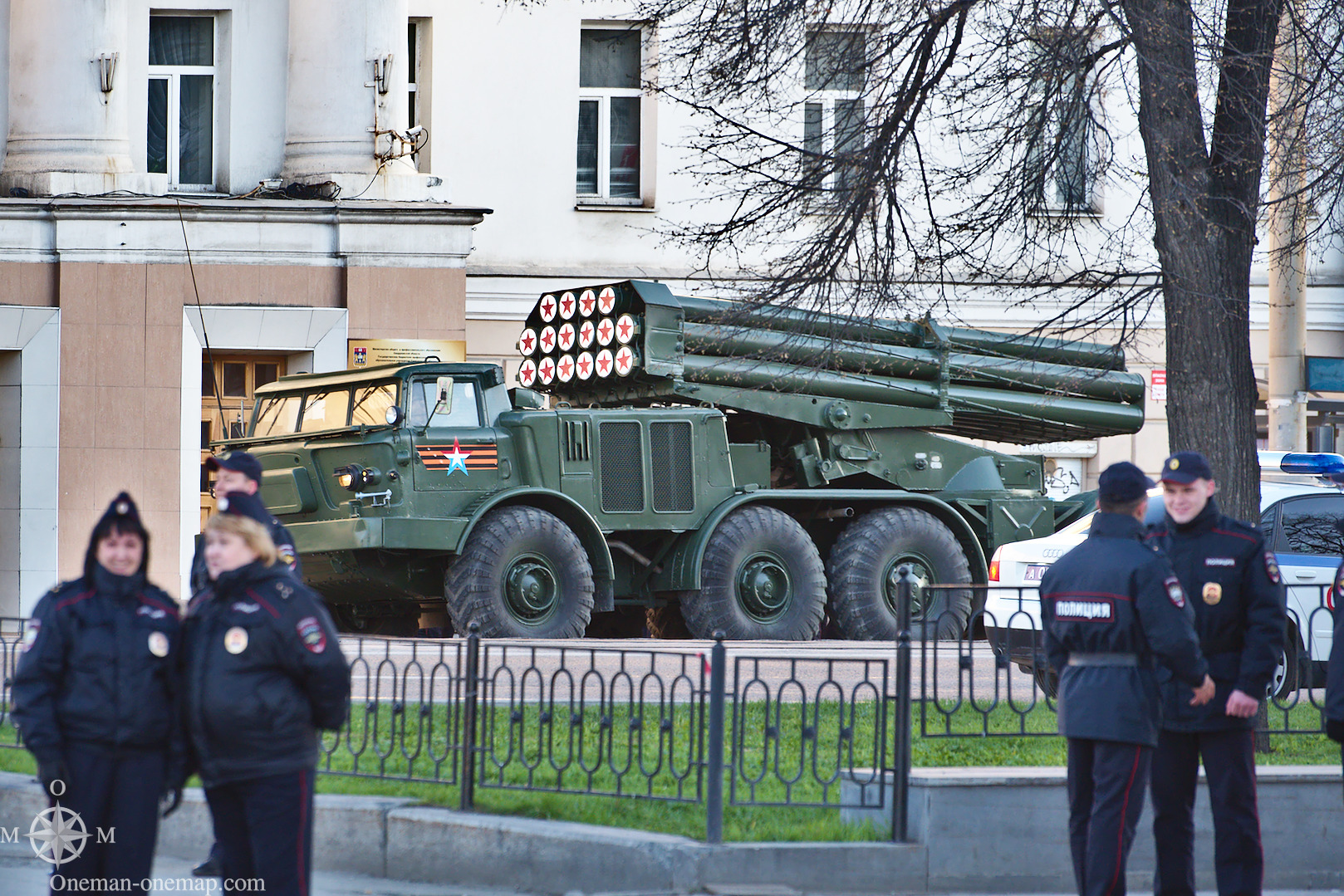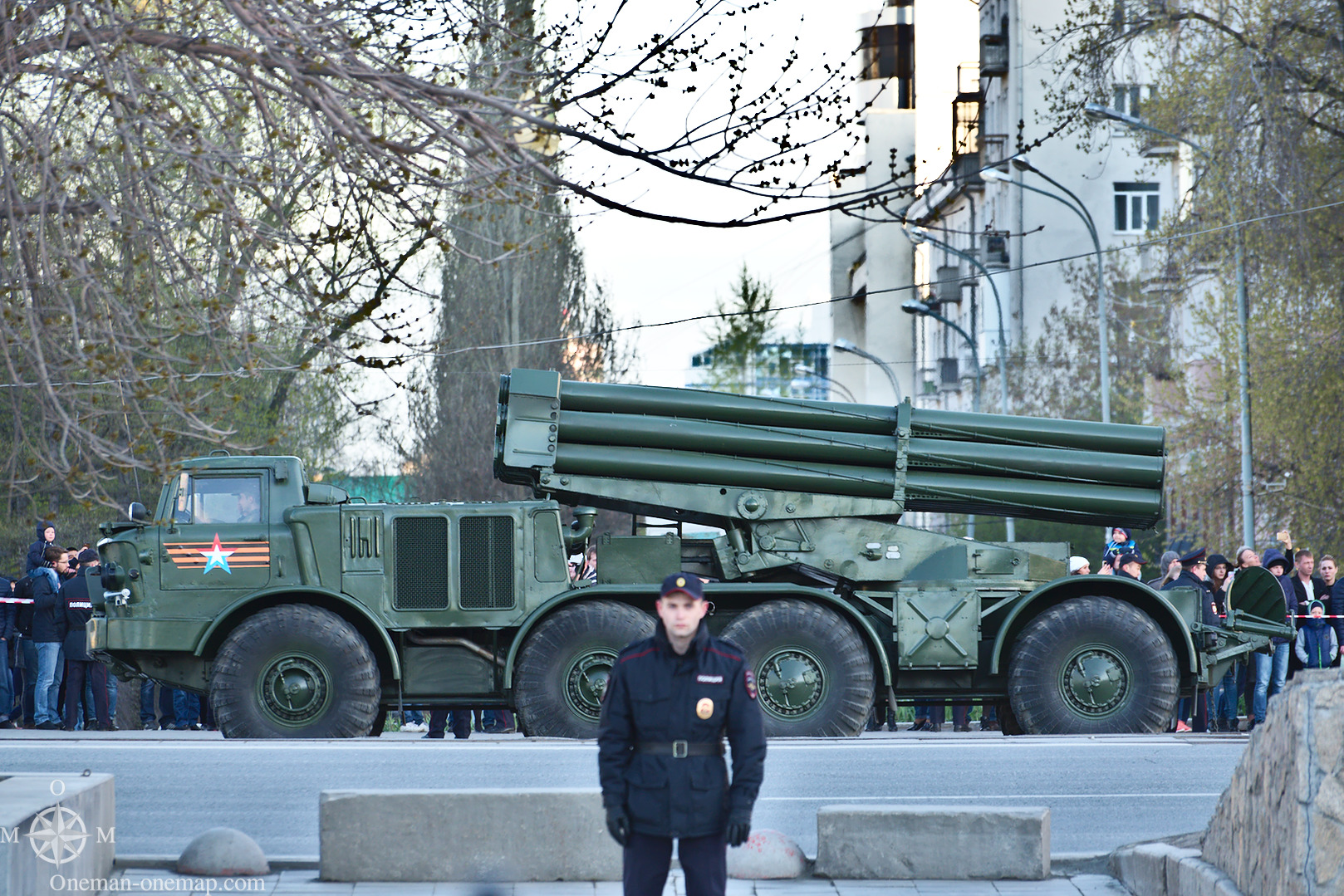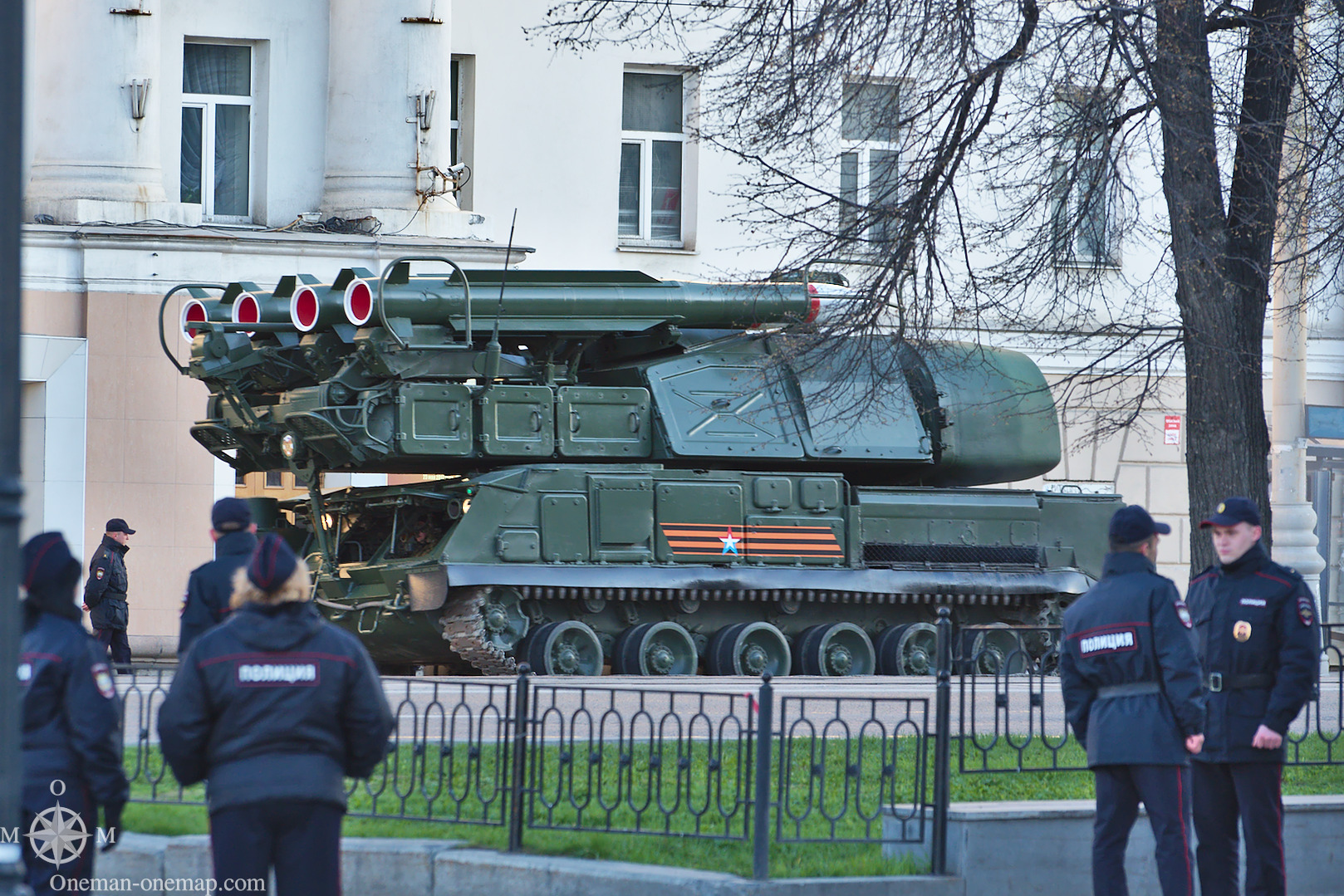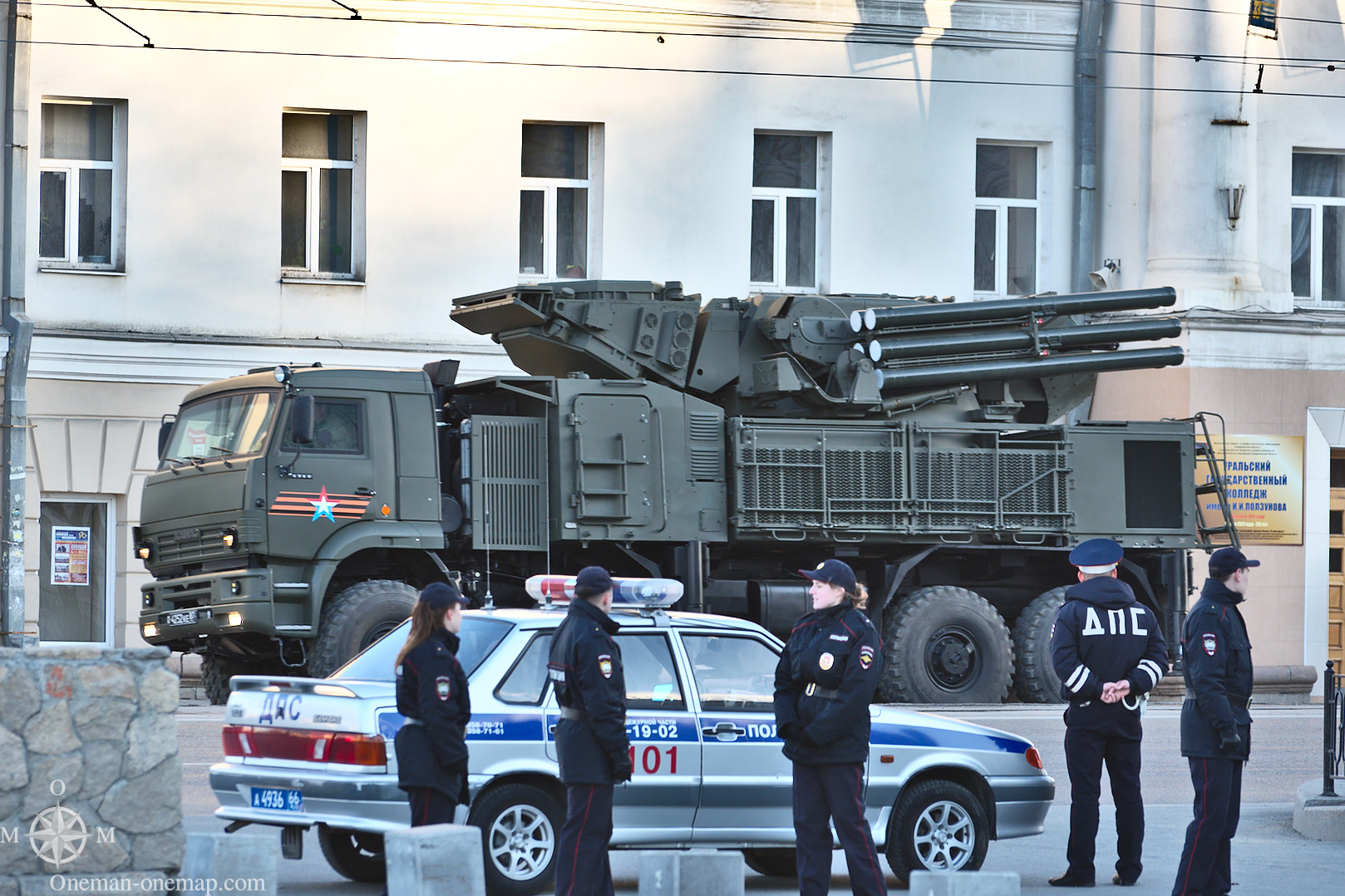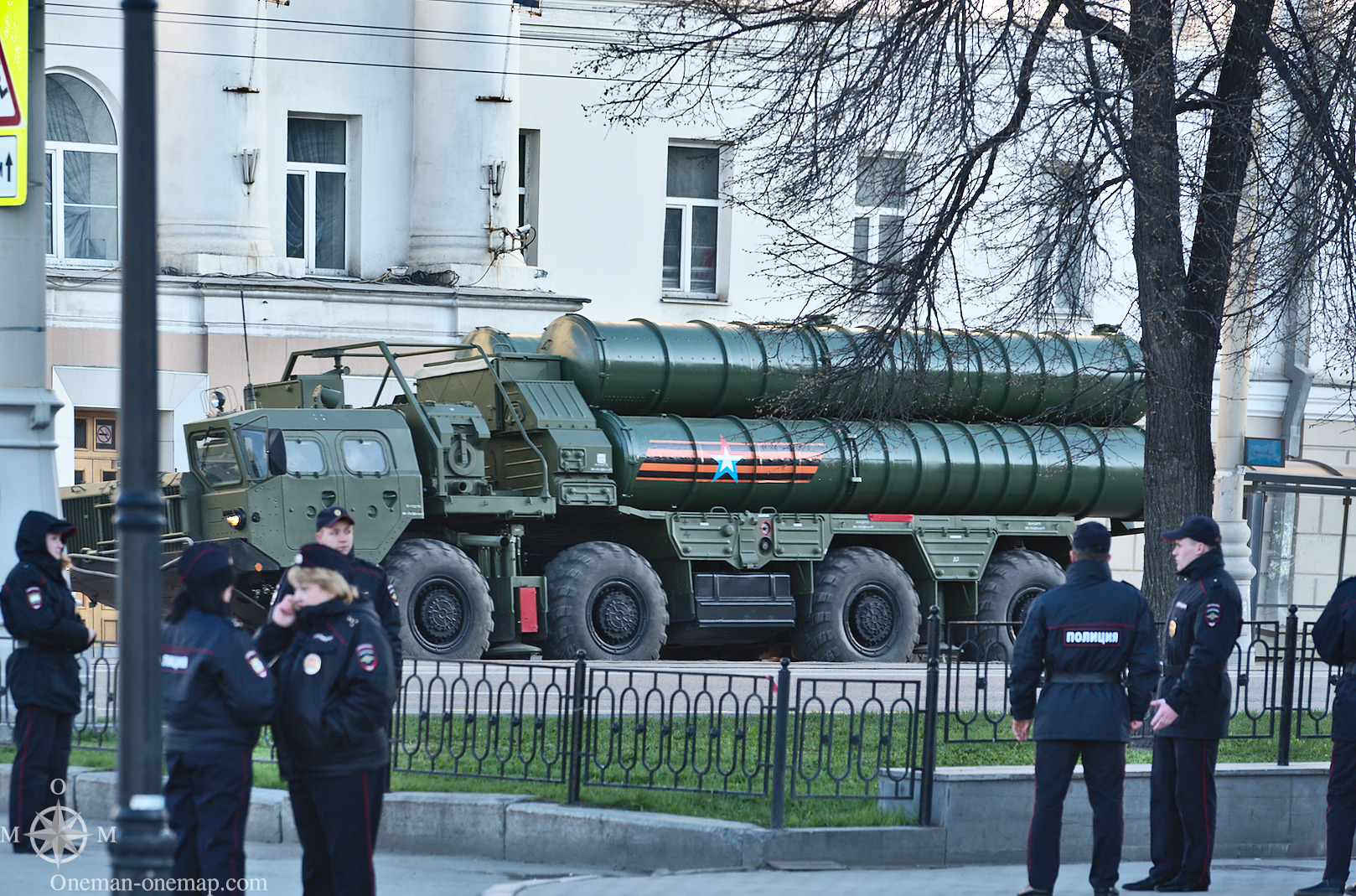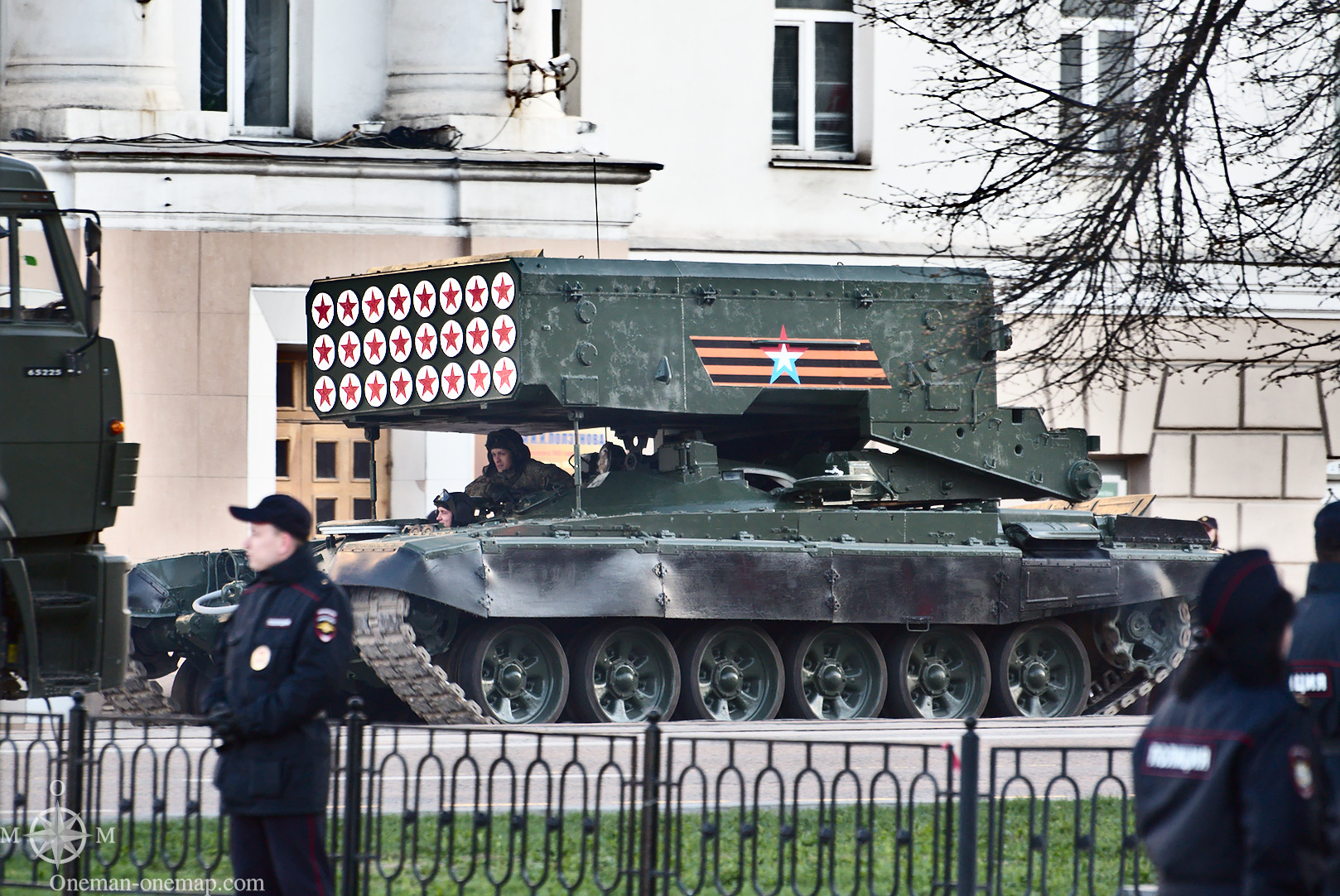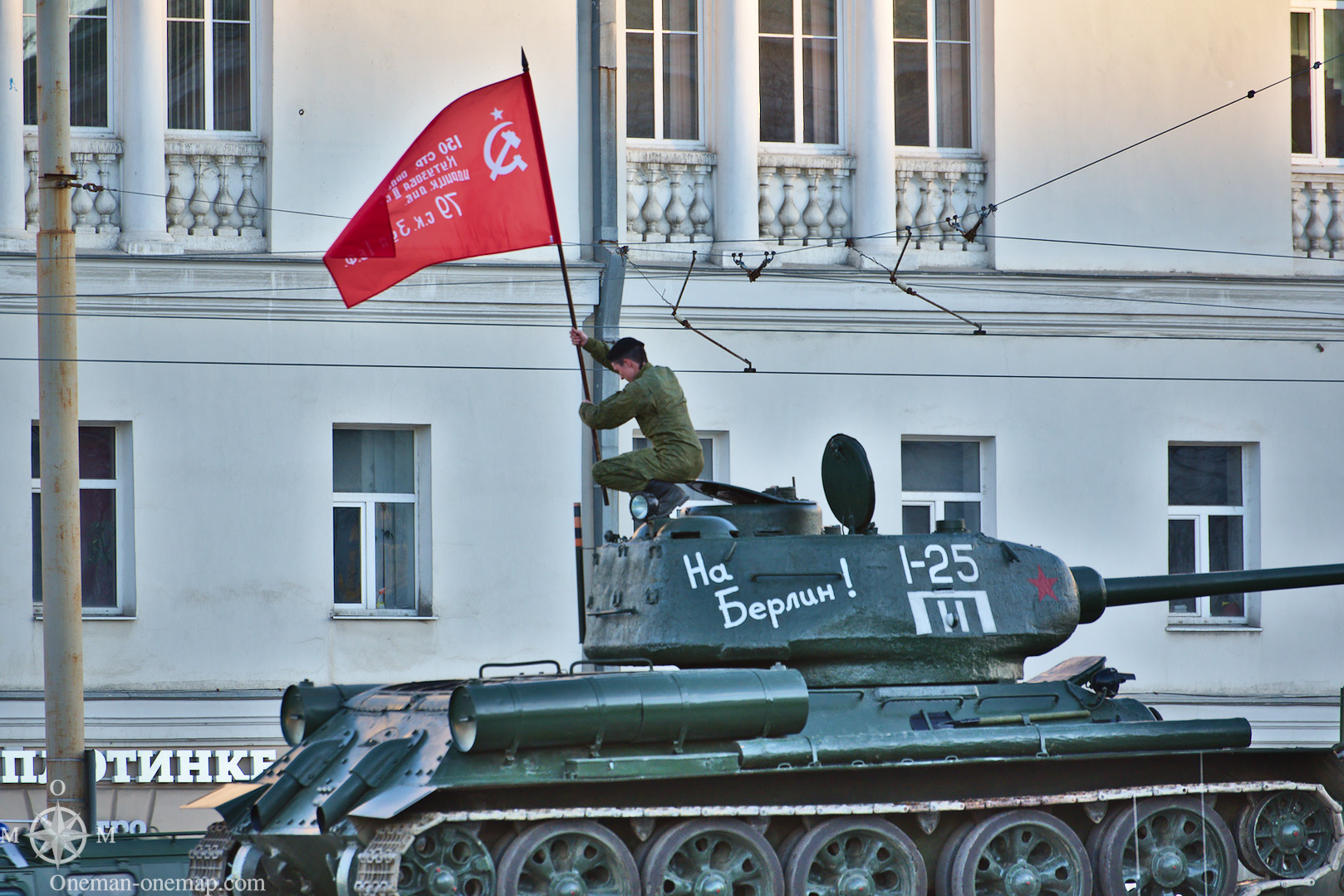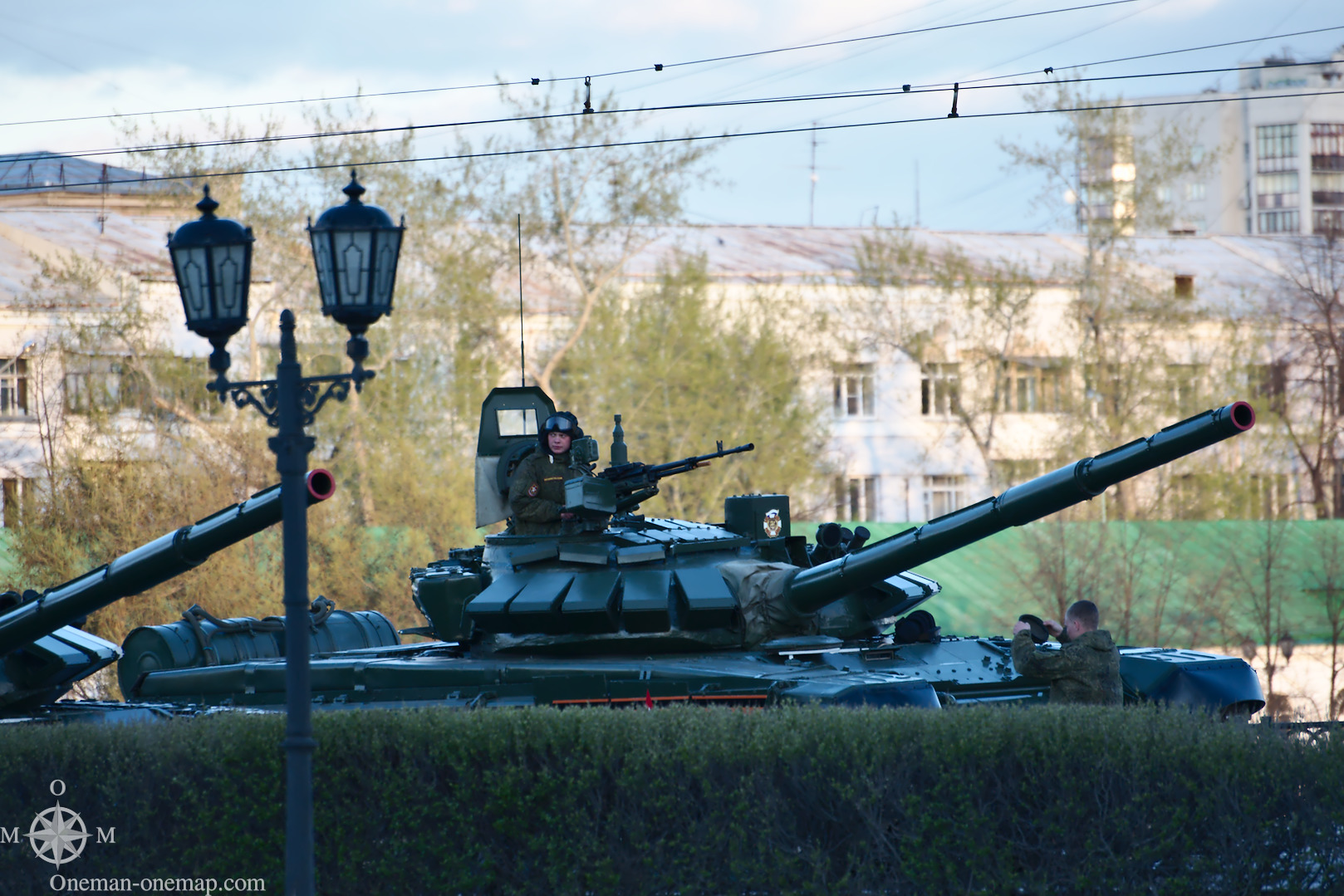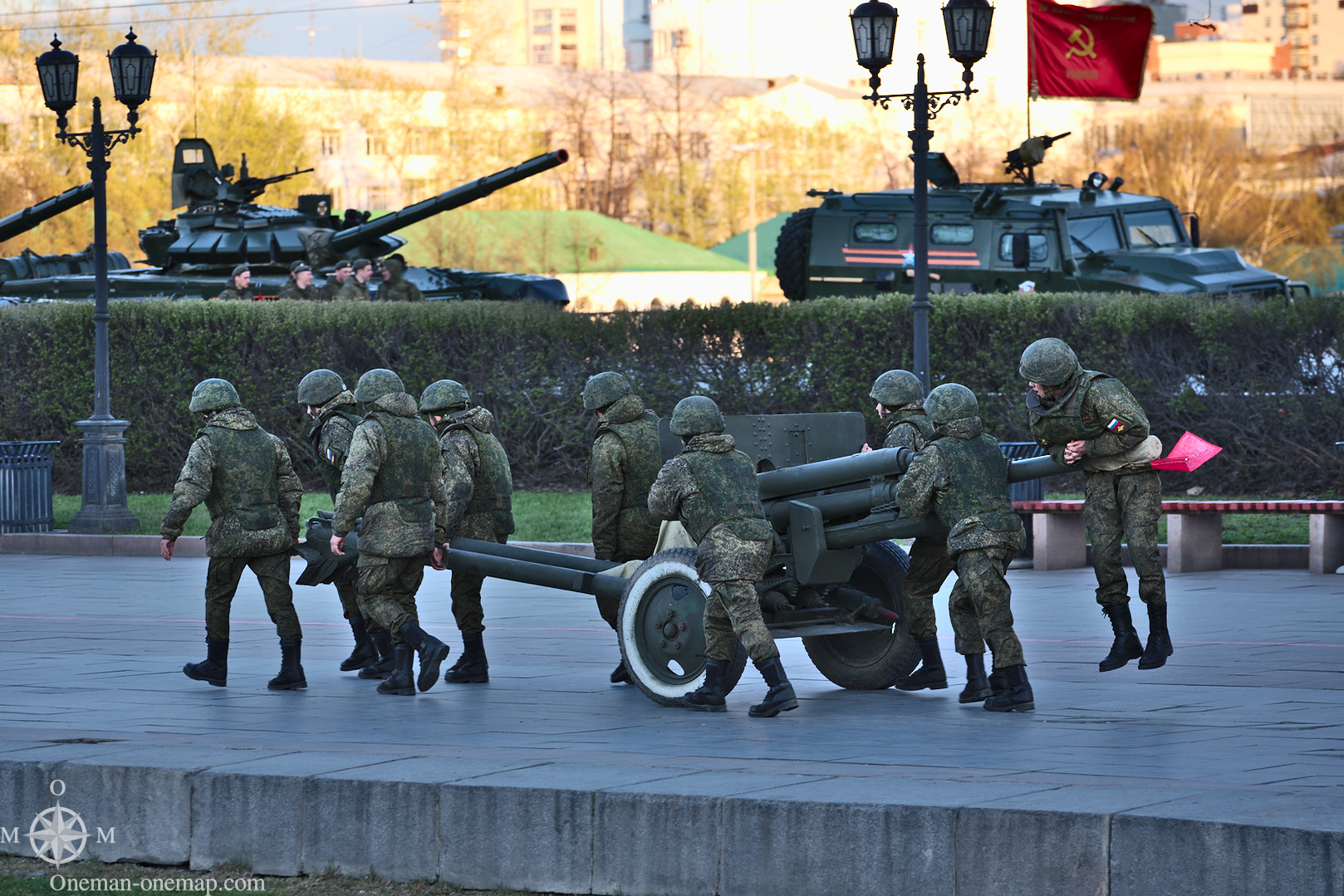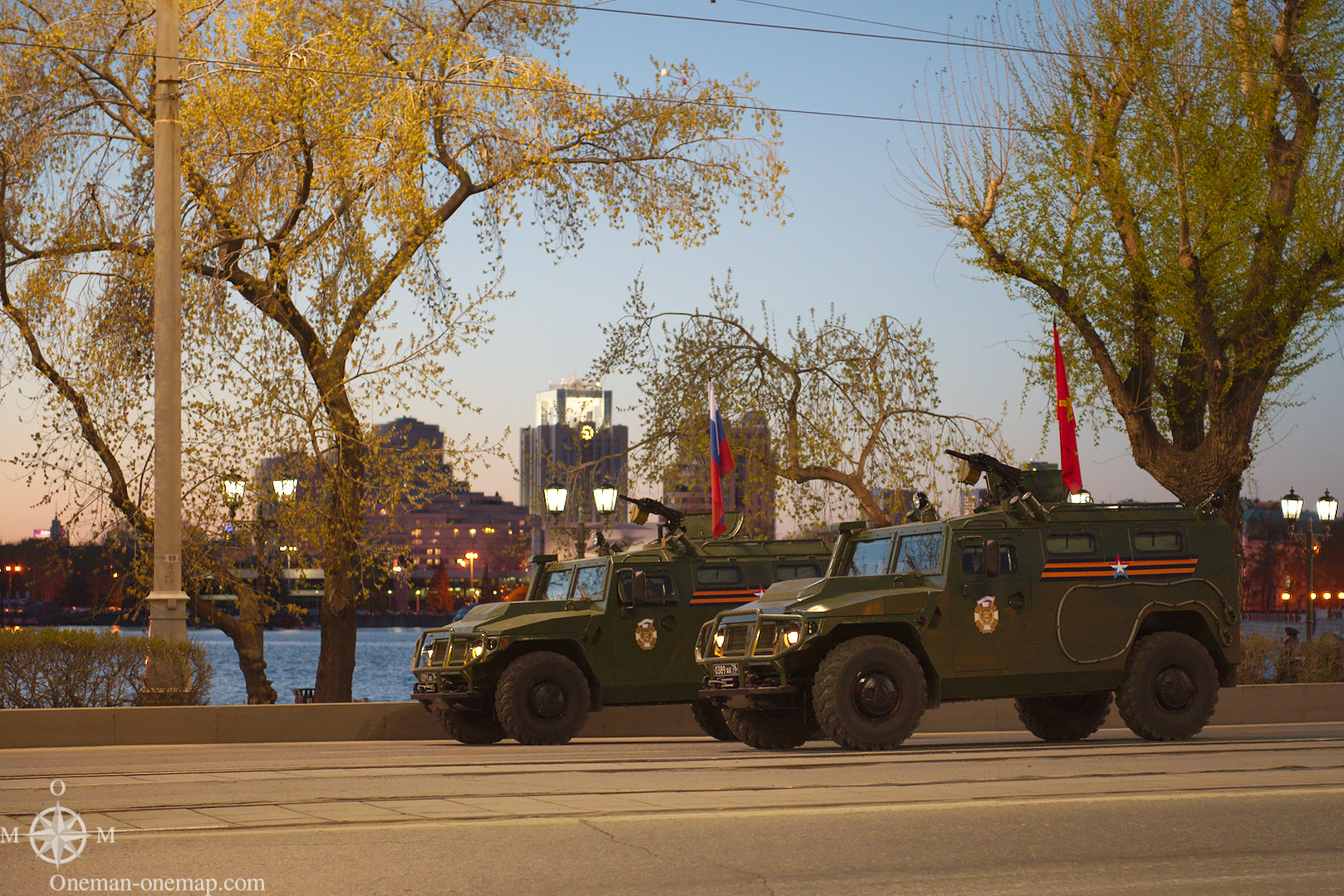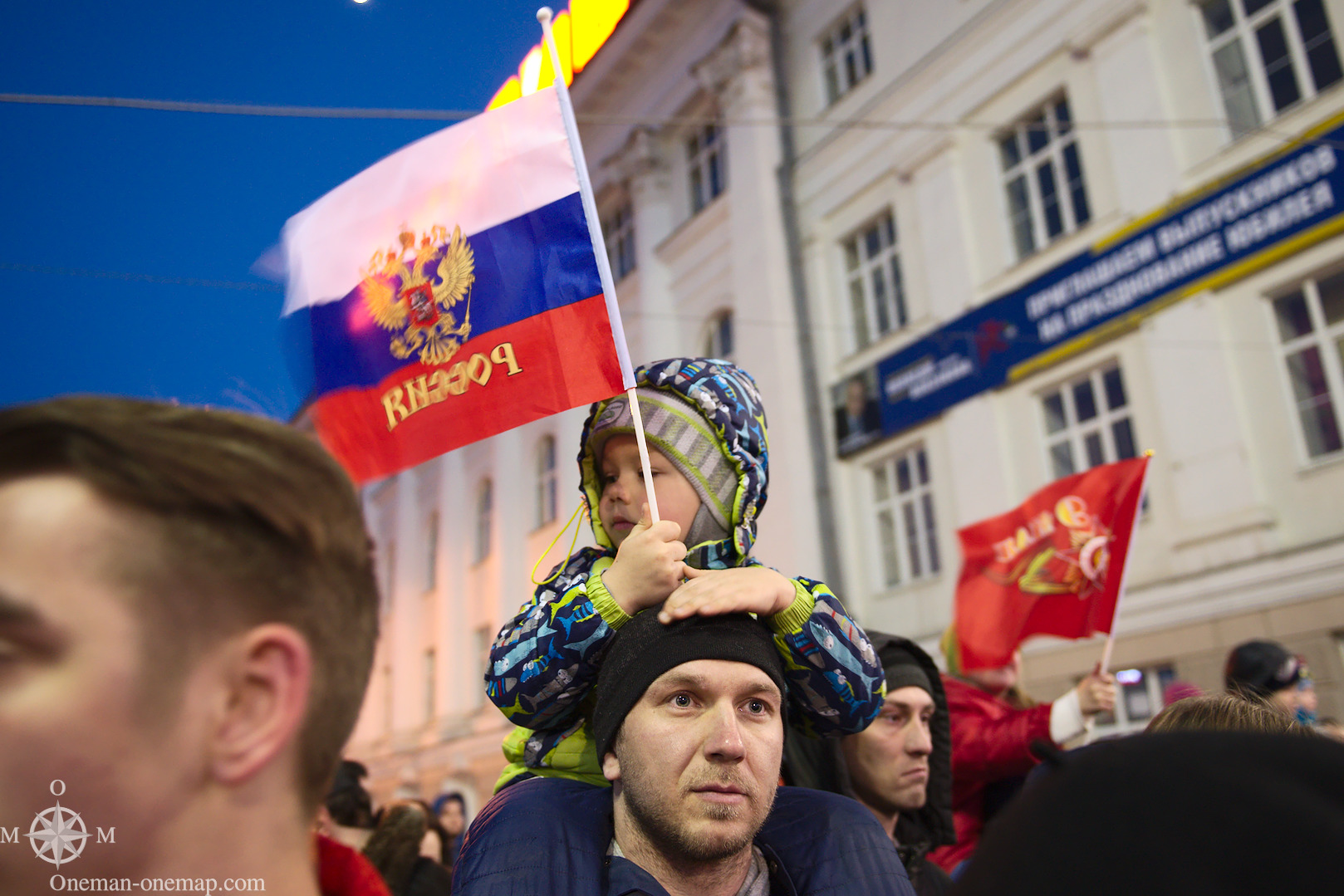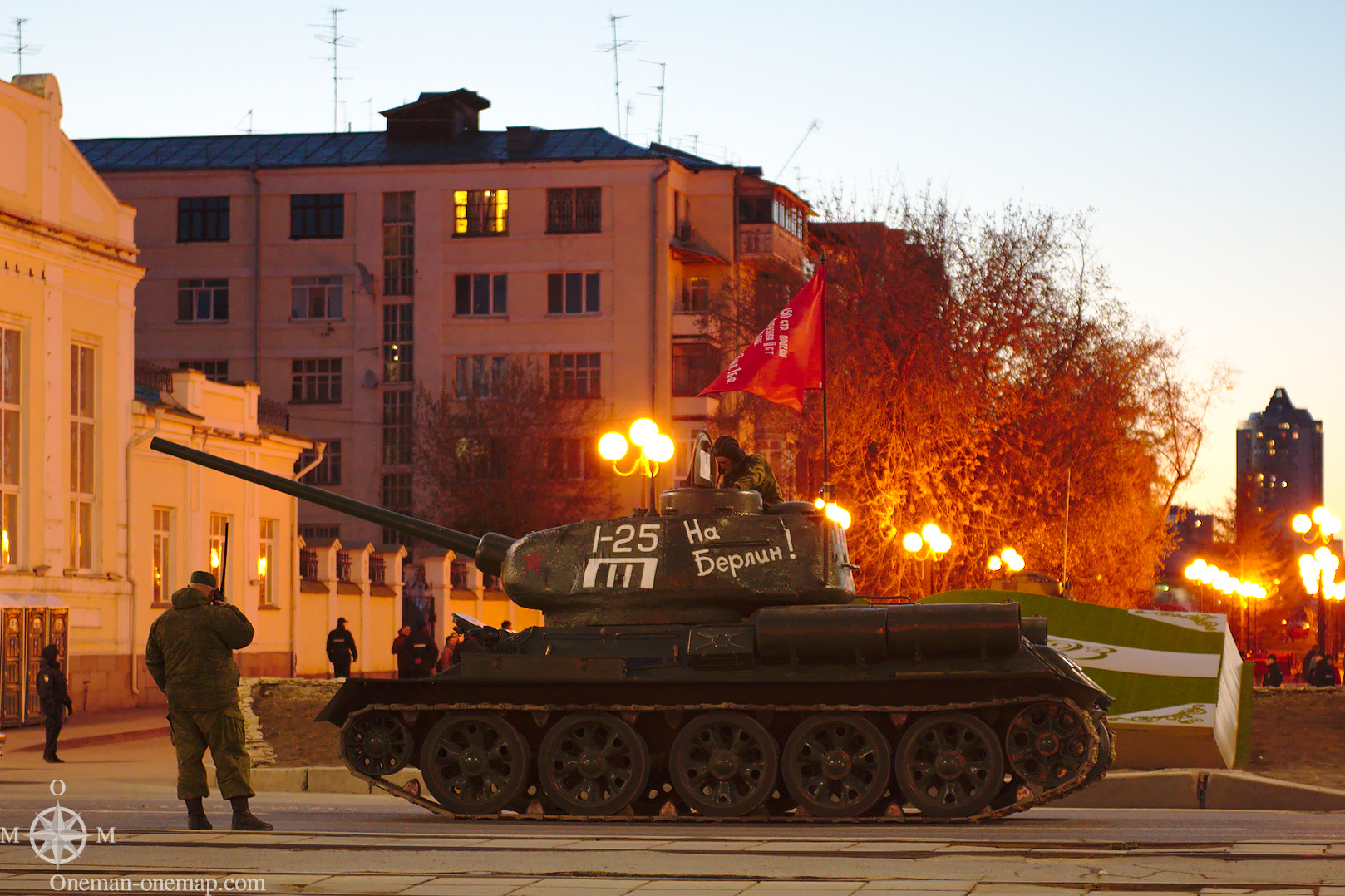Dieser Artikel ist auch auf Deutsch verfügbar. Click here to find out more about Russia!
As a traveler with a camera, I’ve developed a good sense for when something is brewing. When people suddenly start to gather or leave an area. When something looks normal on the surface, but somehow “off”. Then it’s time to think “Let’s wait and see what’s happening here”, and shortly after I often get a good picture.
And something was definitely off here.
But one thing at a time.
I had mainly come to Russia to witness the Victory Day (День Победы, Den’ Pobedy) celebrations and parades. My last day in Yekaterinburg had been filled with a visit to the church and a bit of sports so far, and May 9th was still two days in the future. I had come across all kinds of Victory Day posters, flags and merchandise stalls already, but that had been the case since my arrival.
There were other signs a well, like traveling soldiers. Not really a surprise, May 9th was a Tuesday, and this was the weekend before. The soldiers were probably either coming to the city to be part of the parade or had time off and were on the way to visit their families.
Signs had been erected in the park near the river Iset. May 9th is not just a day for parades, but more importantly a day to celebrate the World War II veterans. Not many are alive anymore. These commemorative signs were put up to remember all veterans who had died since last year.
None of this had been particularly surprising. While visiting the main train station I had gotten the rare opportunity of seeing a steam engine decorated as some kind of “Victory Train” being shunted around. The russian security personnel was so proud that they made an exception and let me take pictures and a video. When I had tried to take a picture of a normal regional train before, an angry lady had turned up immediately and the camera had to go away!
The steam engine was a russian L-Class number 4372 (Л-4372). Not quite historically accurate, the german Wehrmacht had surrendered unconditionally five months before the first L-class engine left the factory. The L-class would then become the most manufactured steam engine in the Sowiet Union.
My first picture with Stalin on it. A couple of days later there would be no shortage of these… 🙂
Shortly after a diesel engine turned up and shunted the steam engine aside.
I walked back to the inner city and had just turned onto проспект Ленина (Prospekt Lenina), the main street named after Lenin, when an old police car came to a halt with screetching tires at a traffic signal, crossways, and stopped a car. The policeman left his car, walked up to the other car and told the driver to lower his side window. No-one really took notice, traffic checks are quite common.
But something was off. The driver was allowed to continue without a ticket, but the police car stayed there, blocking the street. All other cars had to turn around. Time for me to wait and see what was going to happen…
The townhall with the Lenin statue and the tribune for the parade was a couple hundred meters down the road. Less and less pedestrians came from that direction, and small groups of policemen started to turn up instead. Other police cars passed. Then a military truck, and it struck me: This is going to be a rehearsal for the military parade. I had known that there were several rehearsals for the parade in Moscow, but I hadn’t known that there would be a rehearsal in Yekaterinburg as well.
I had to be quick. I started running towards the townhall, the police starting to block all entrances behind me. In the confusion everybody probably assumed I was an official photographer due to my big camera (just like at the Marathon before…), and so I was able to walk around in front of all the soldiers for a while.
Quickly patching the markings so everything’s fine on May 9…
After a while I was spotted by a young soldier and kindly asked to go behind the blockades. I haven’t run into an impolite person in uniform during my whole stay in Russia, by the way, on the contrary! When the soldier looked at my camera, he gave me a tip: quickly run around two blocks and wait at the bridge over the river Iset. So off I was. And he was right, the barricade at the bottleneck near the bridge was so close to the main street that I could already see everything with my naked eye.
“Erm, Darling, there’s a tank in front of the building…”
“A tank? Do you maybe mean the howitzer?”
A rare sight: A mobile launcher for the russian S-300 missile system. This system is supposedly being used in Syria at the moment.
Every parade is traditionally led by an original T-34 tank from World War II. These tanks are still being maintained with a great amount of care, and there shouldn’t really be a shortage of spare parts: about 35.000 units were produced.
This young soldier is hoisting the flag of the 150th Rifle Division, which became famous for raising the Soviet flag over the Reichstag near the end of the war. The painting on the side of the tank, нa берлин!, means “To Berlin!”.
Eight people are working, but only the one to the right is really pulling his weight 😉
The parade was set up after about two hours, but then nothing happened for three hours. As far as I could make out, there were technical difficulties and the start was postponed again and again. It’s good it was just a rehearsal!
The engines were being turned on multiple times, only to be turned off a couple of minutes later. It was getting colder and colder. Four degrees Celsius, two degrees, zero. I was hardly able to stand any longer and couldn’t keep the camera still anymore. But we had been waiting for four hours already, and who wants to give up after that?
Relief finally came around 11 PM. I managed to take the following video with my shaky hands, then I happily returned to the hotel. Do Swidanja, Yekaterinburg, tomorrow I’ll hop onto the Trans-Siberian Railway!
This post was written by Simon for One Man, One Map. The original can be found here. All rights reserved.

